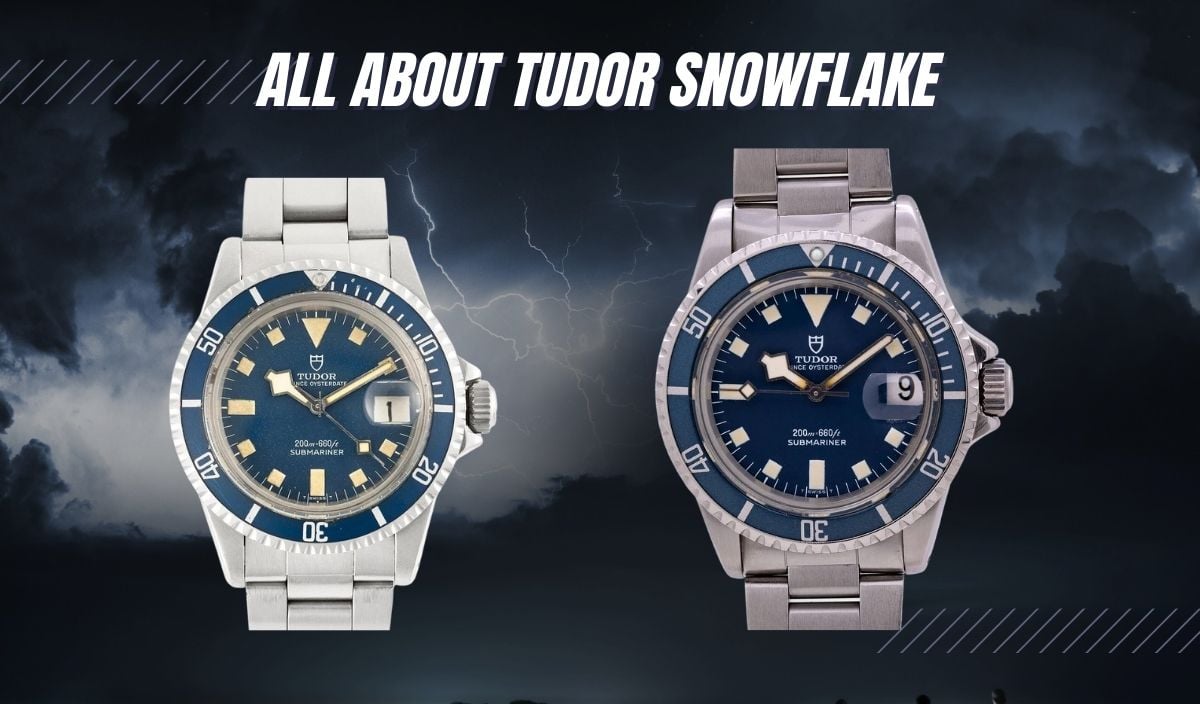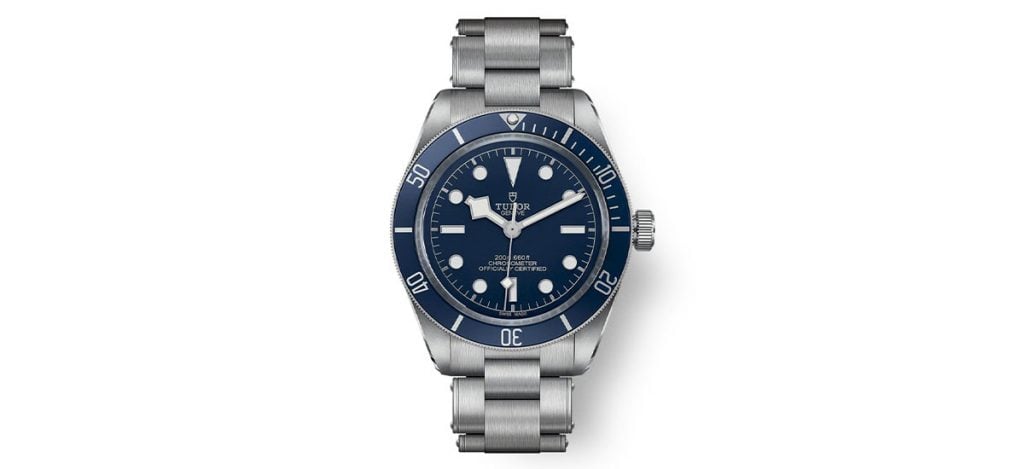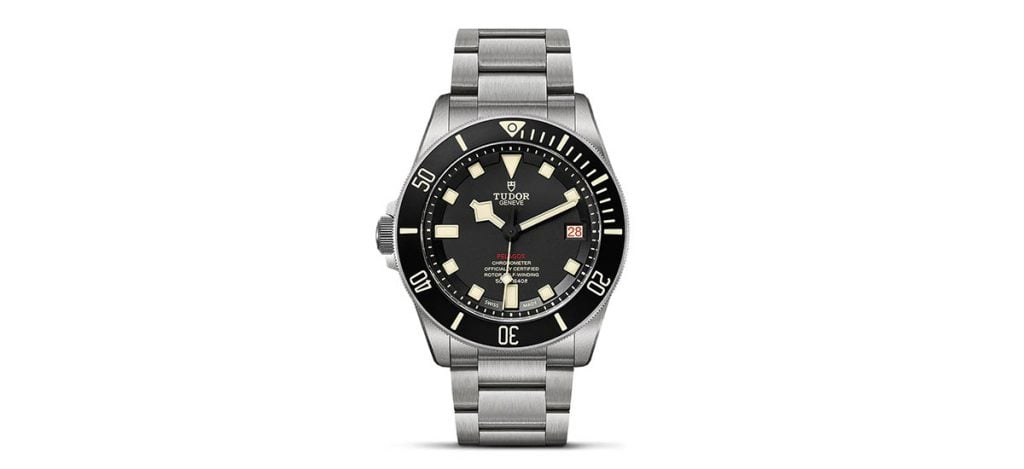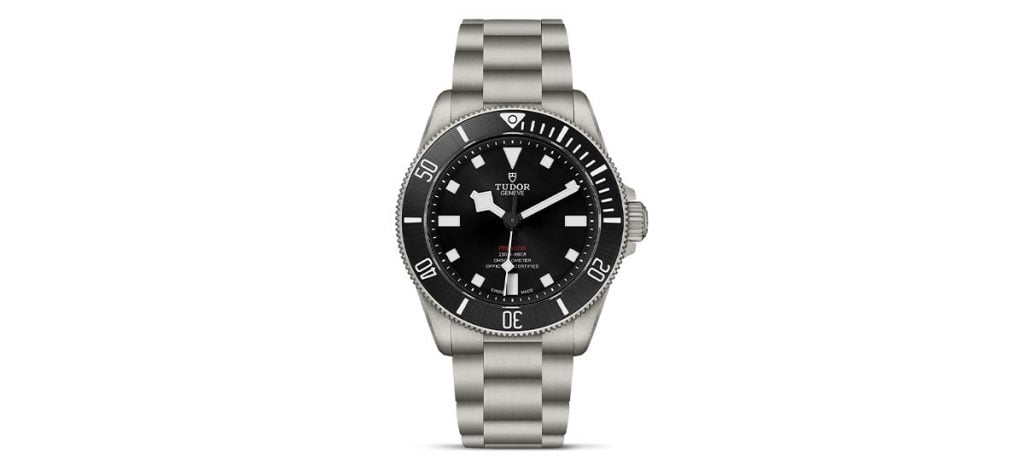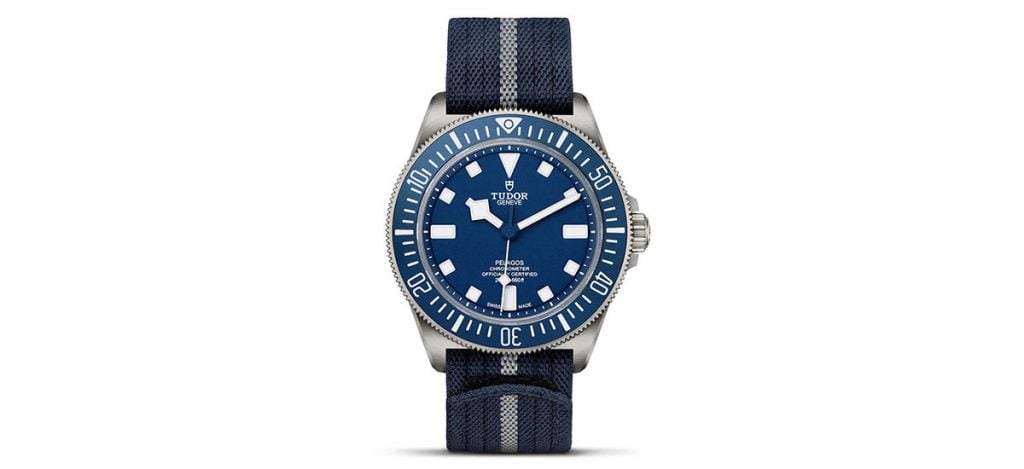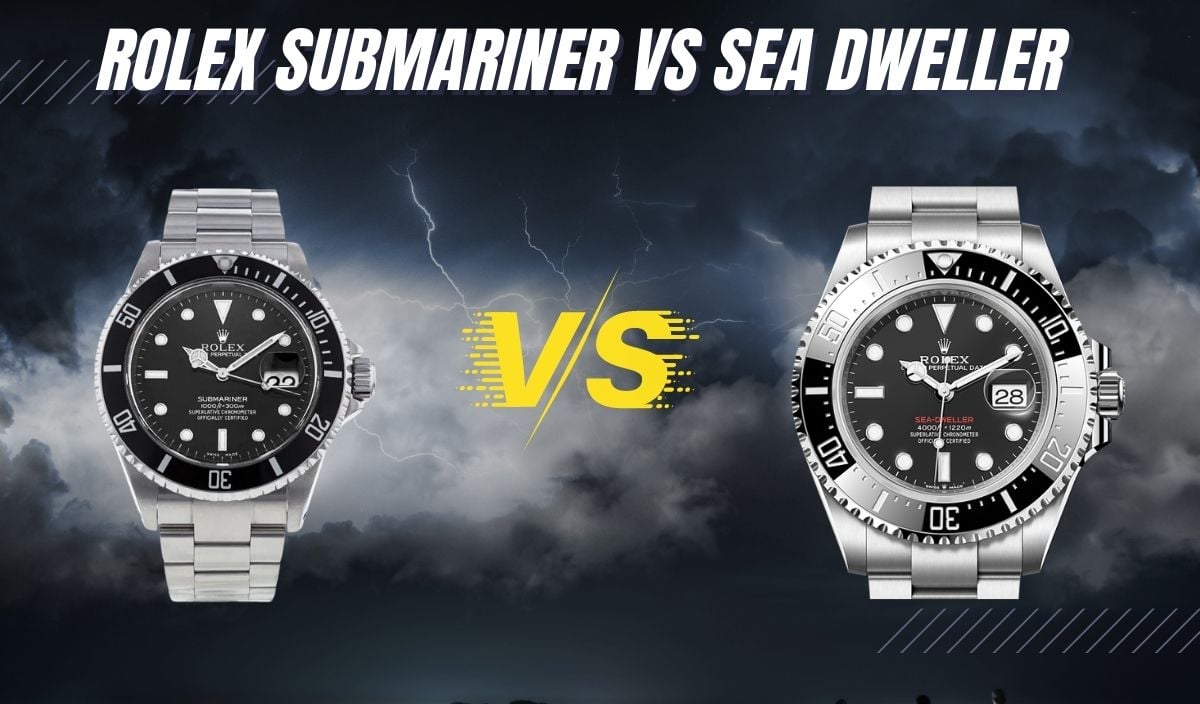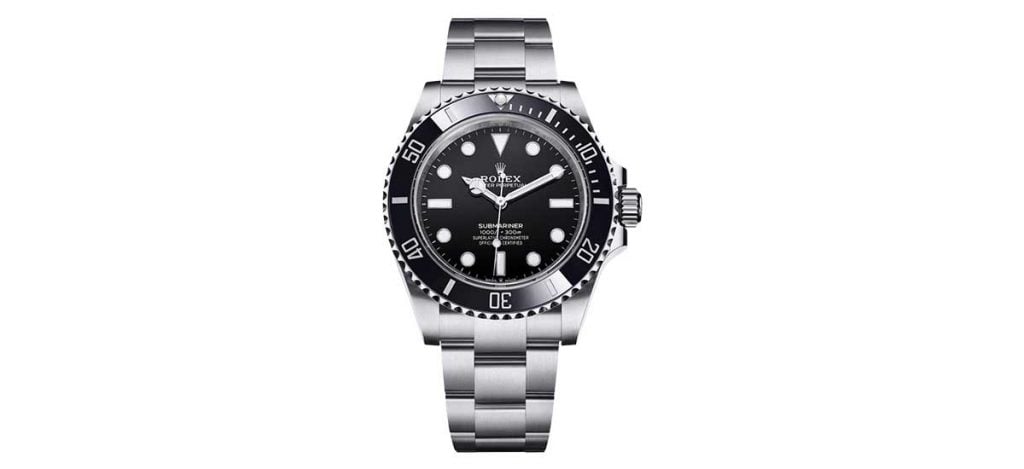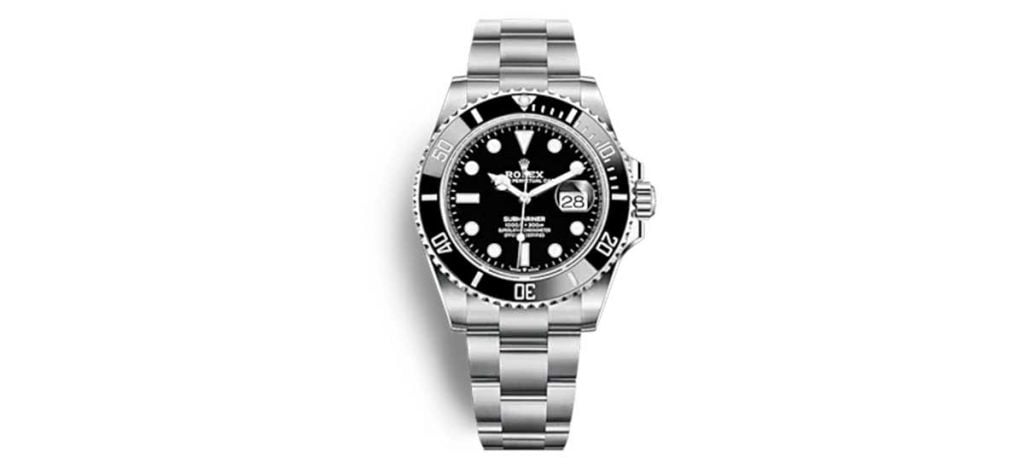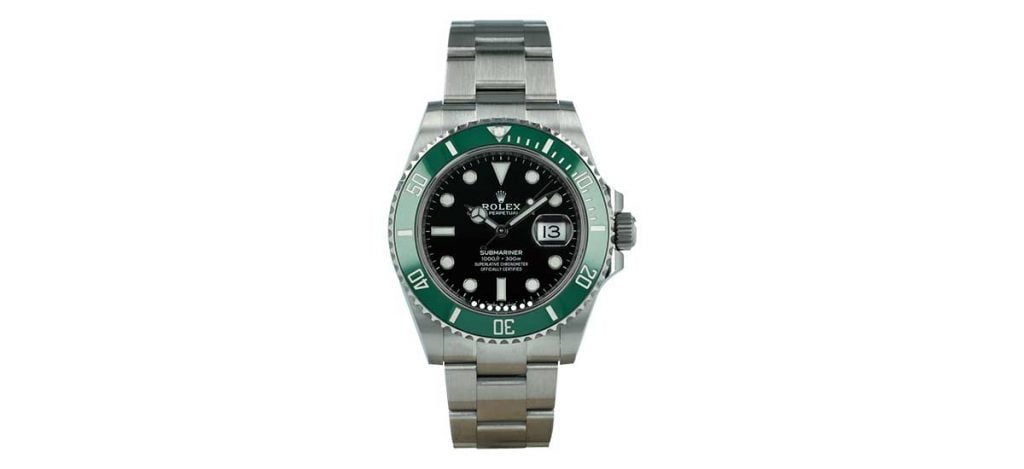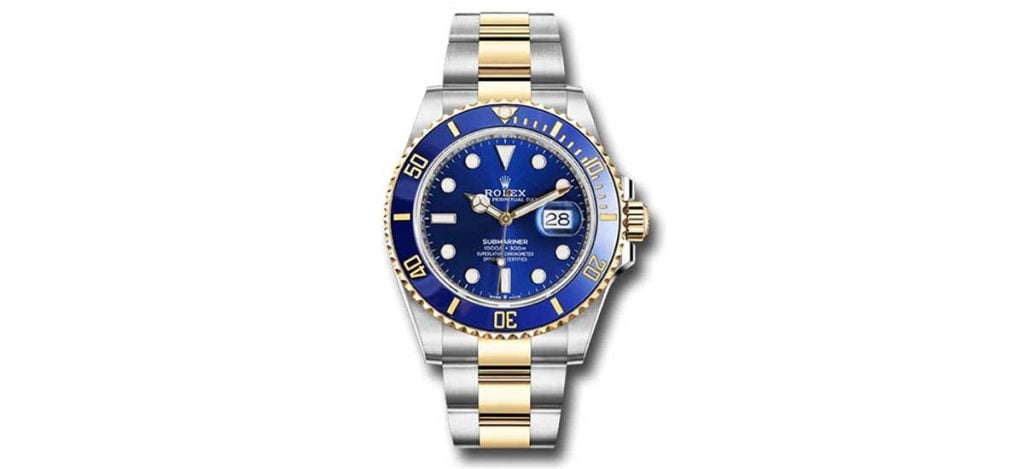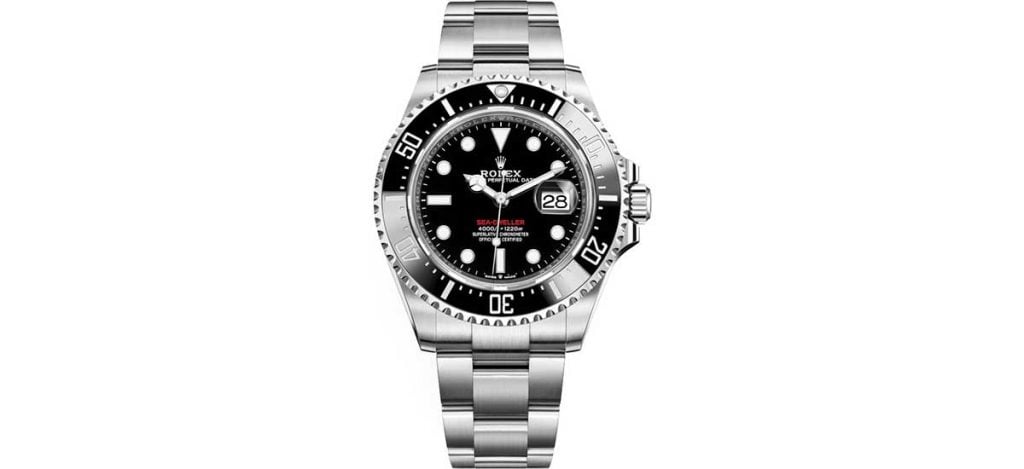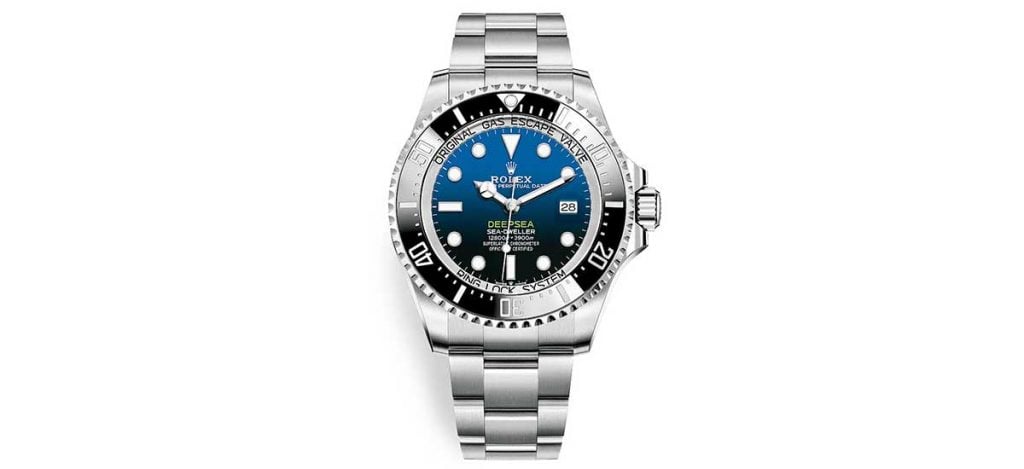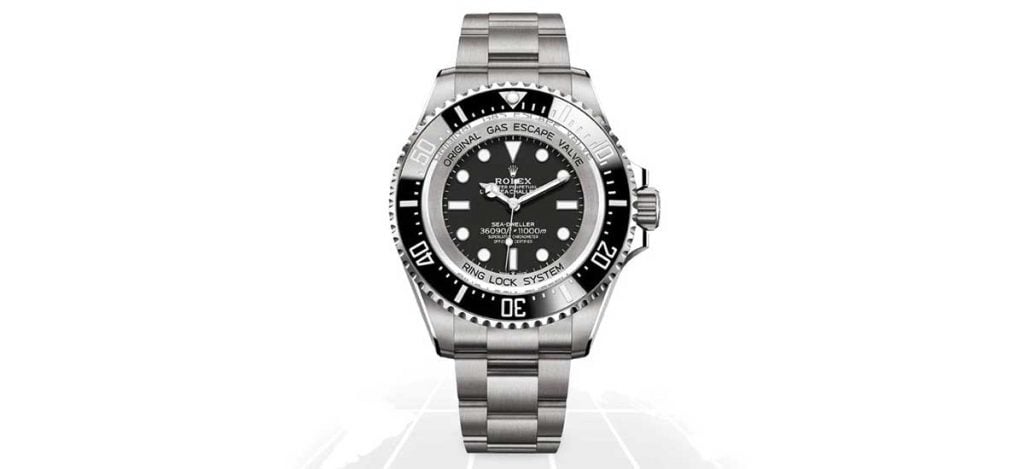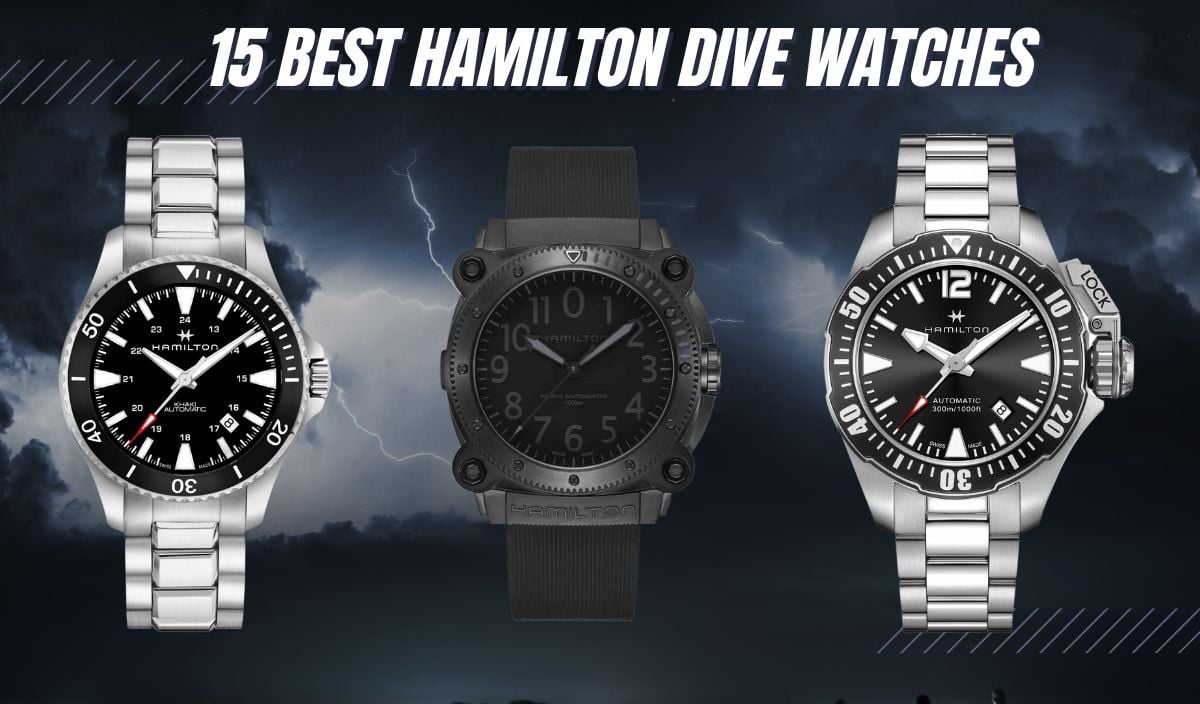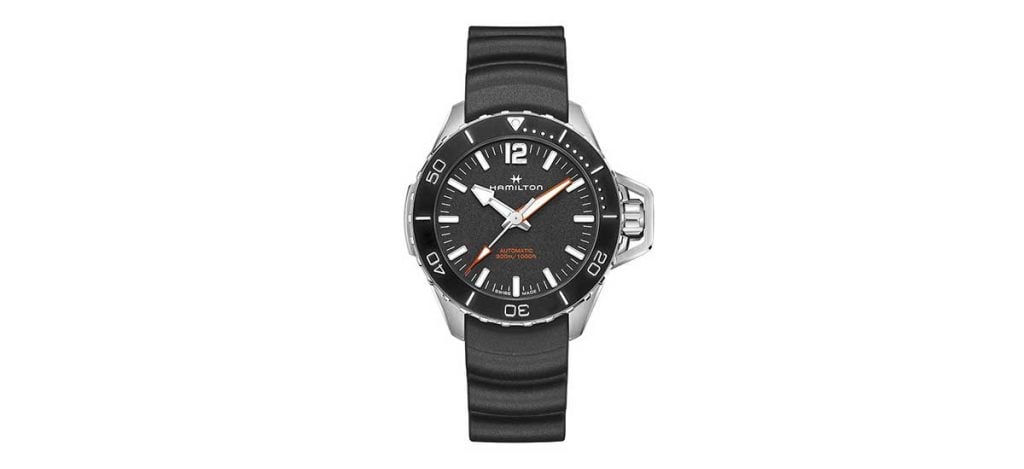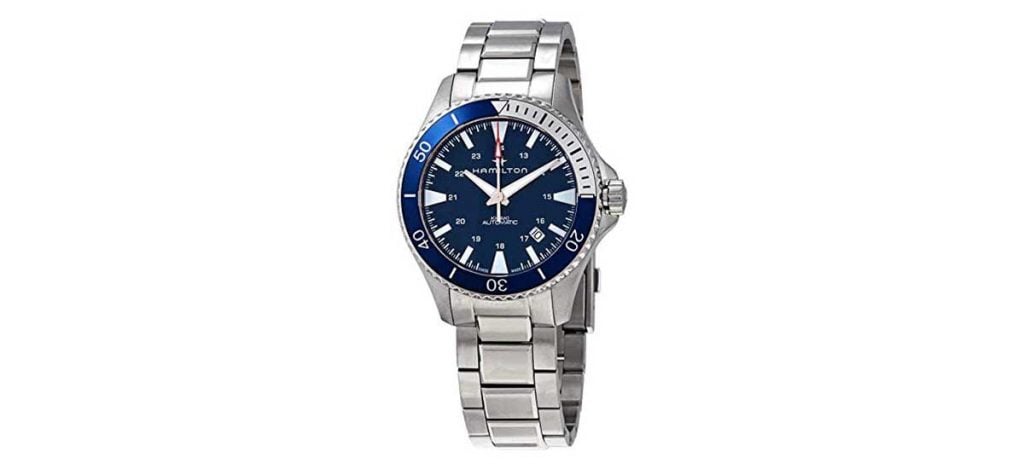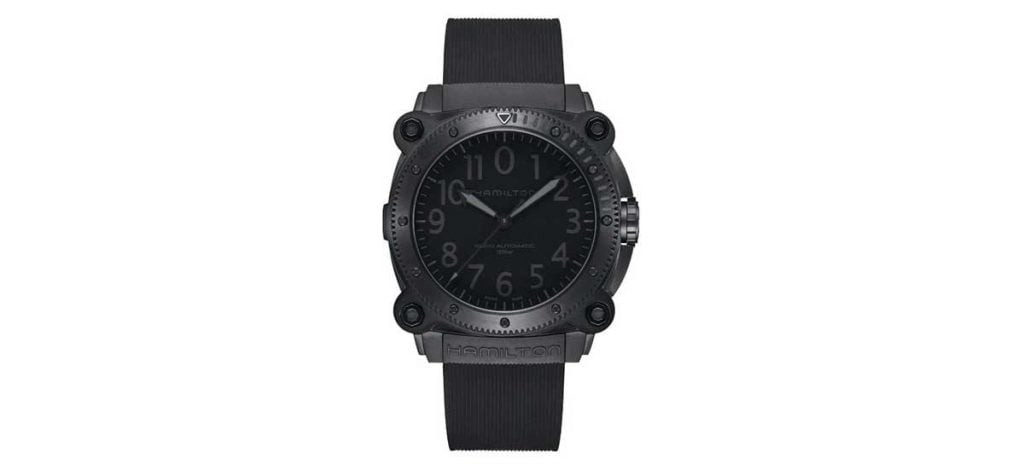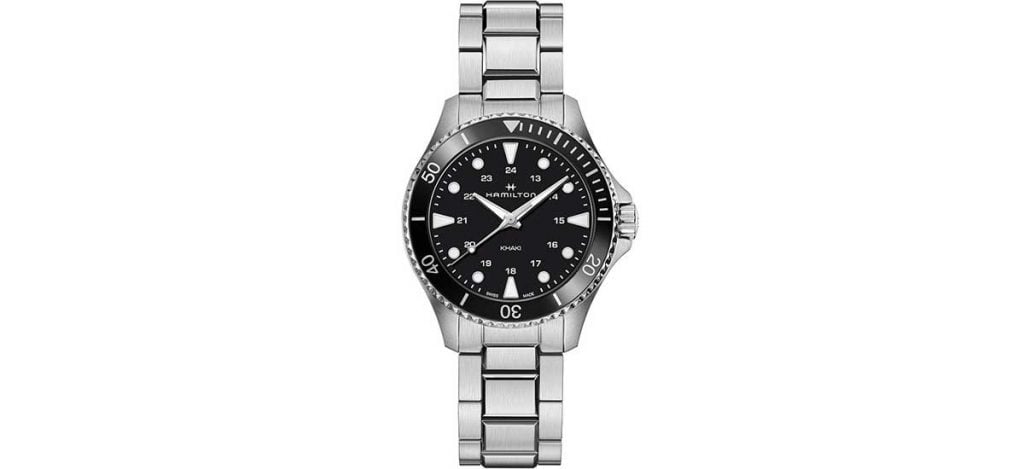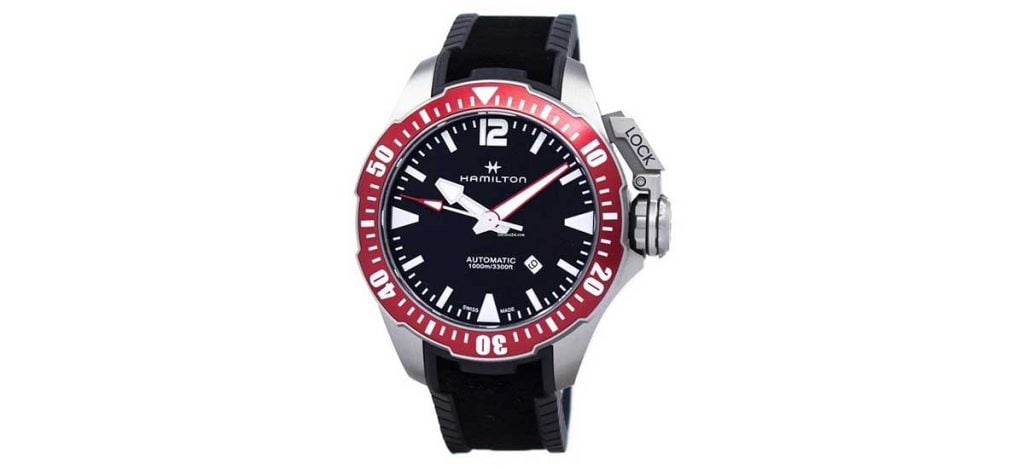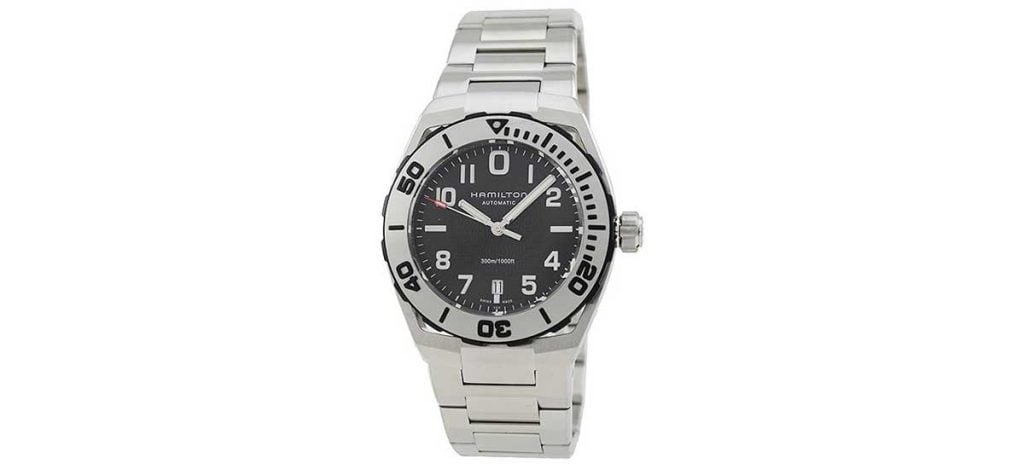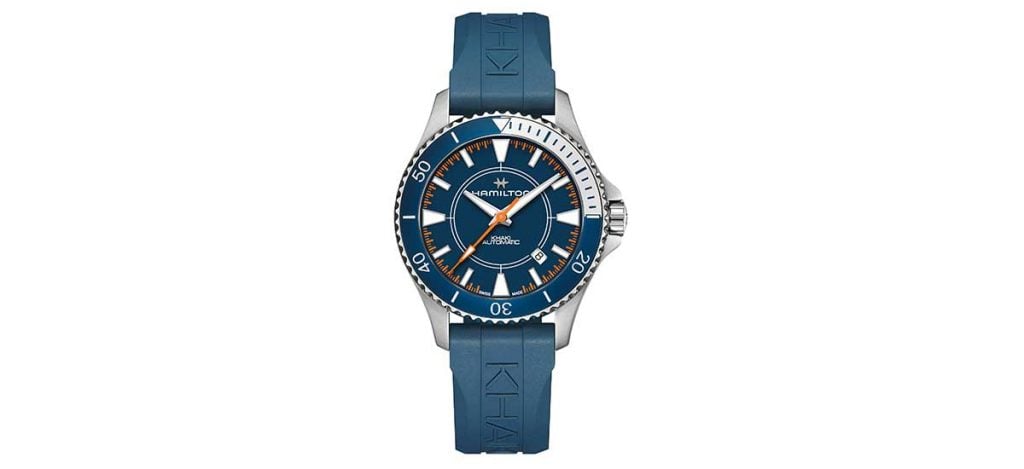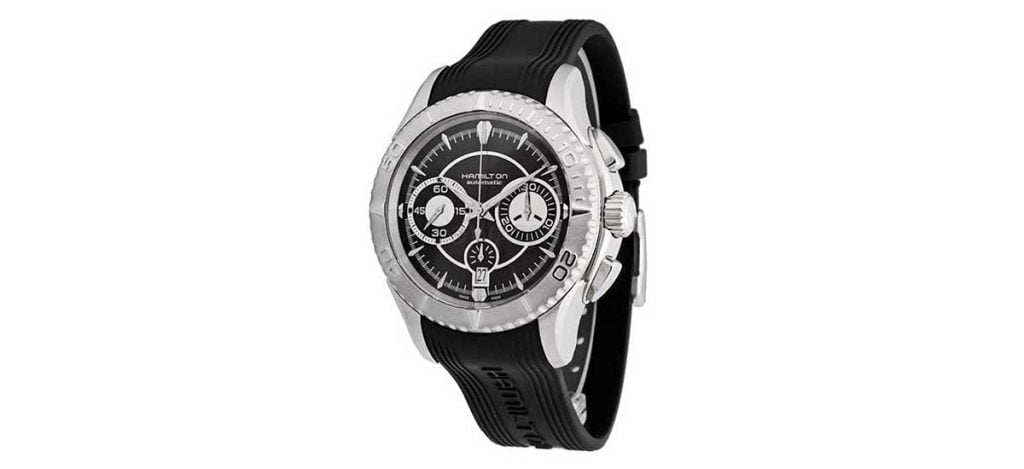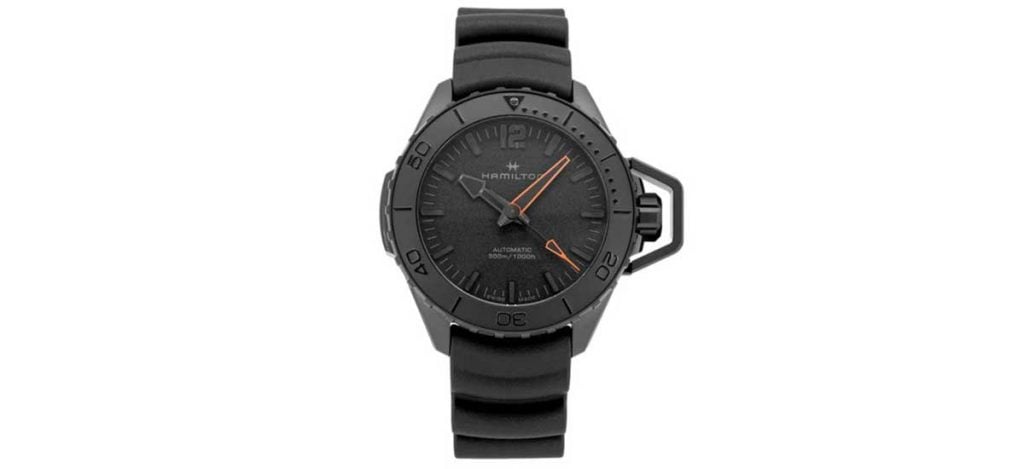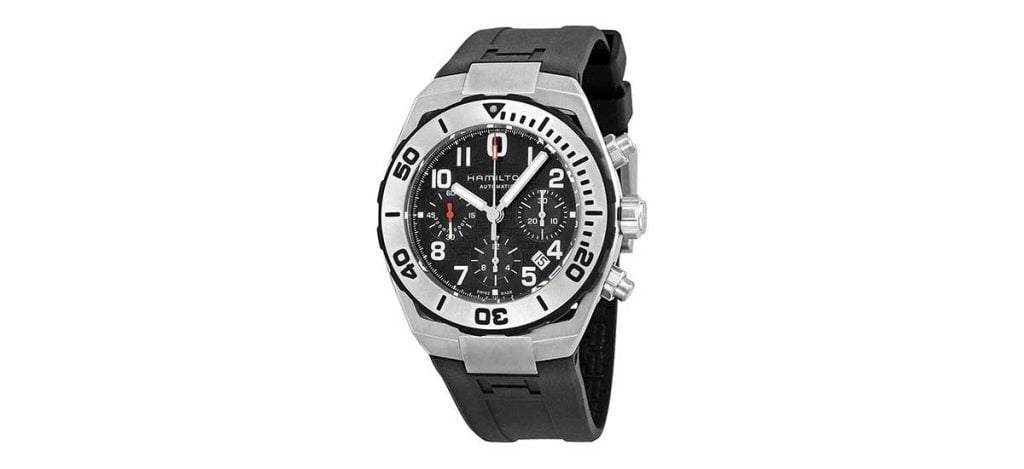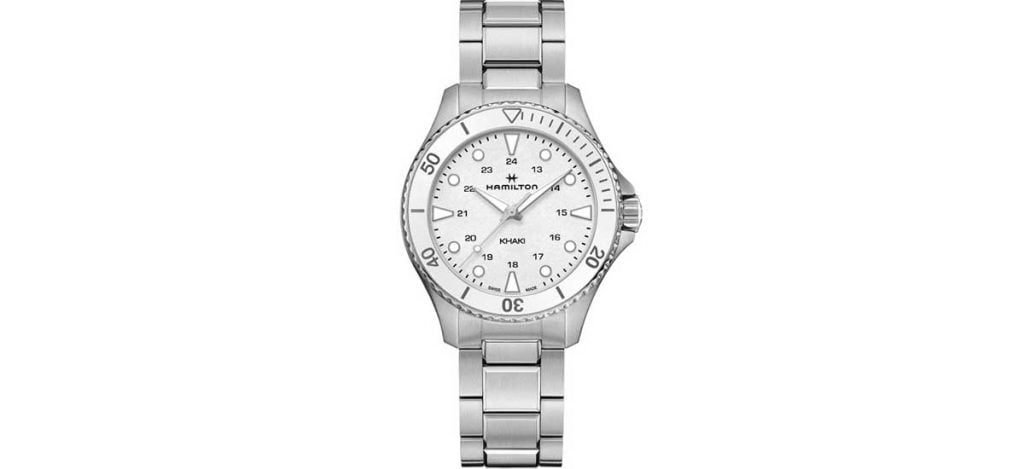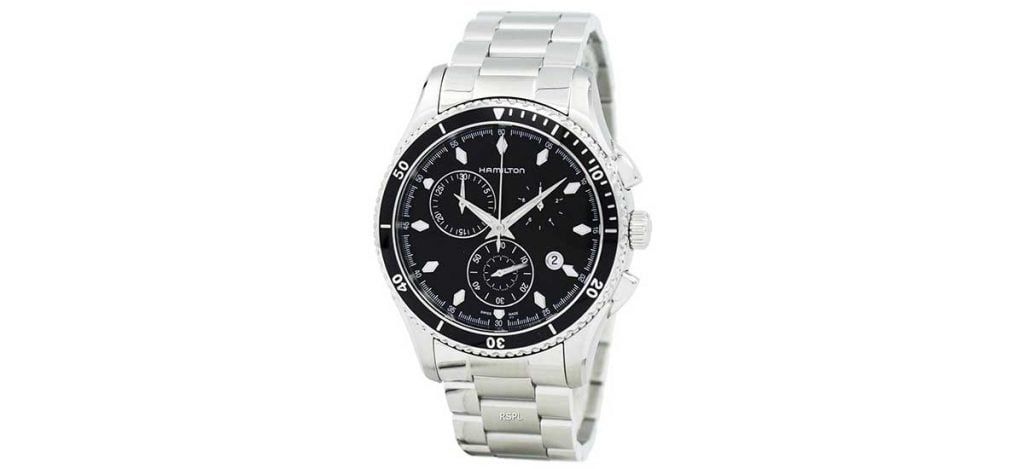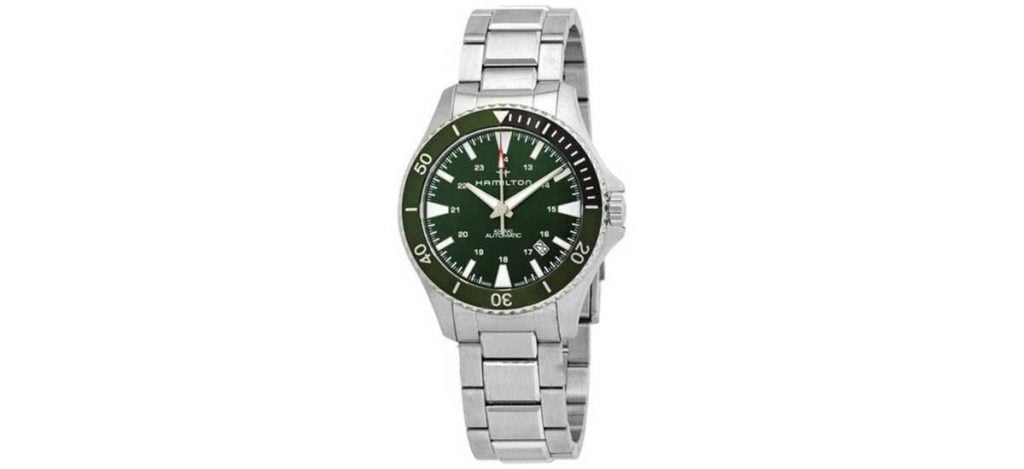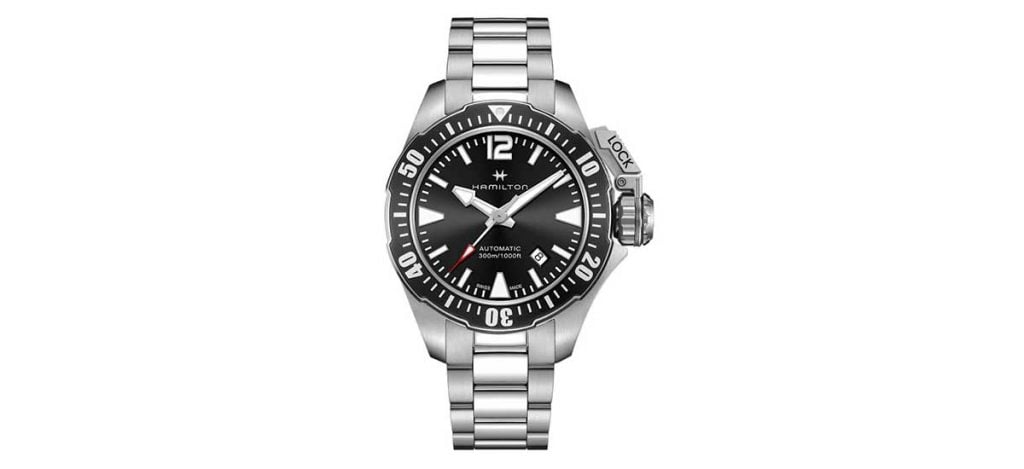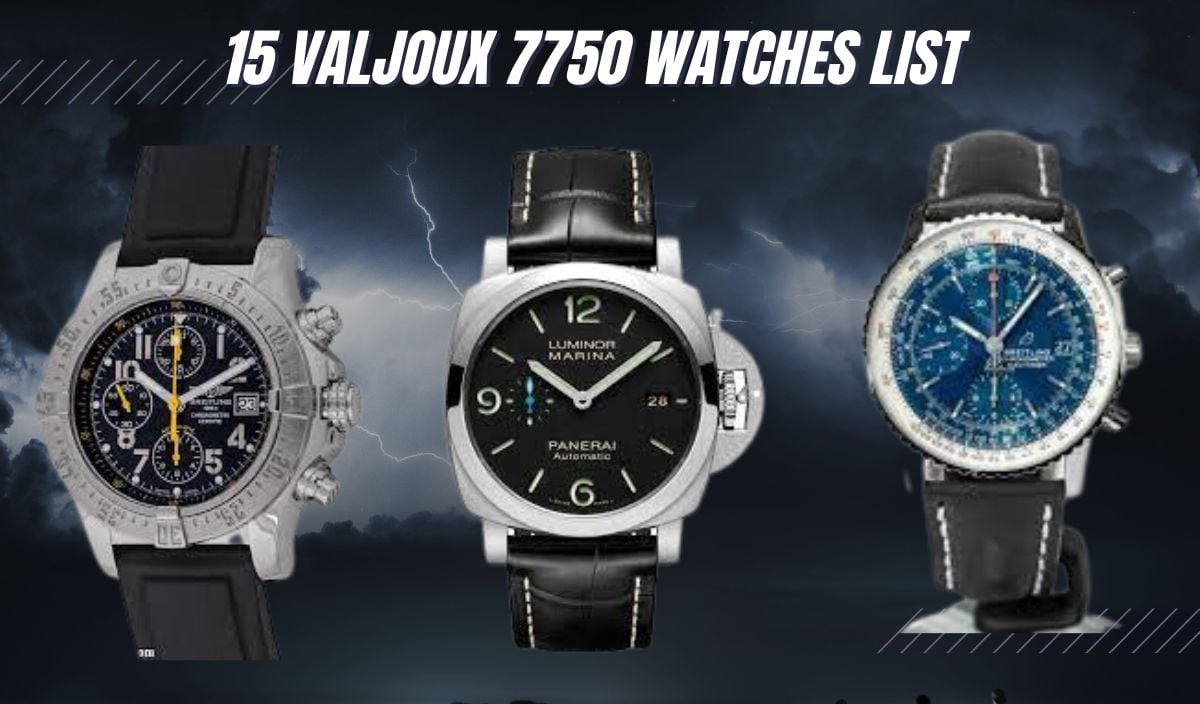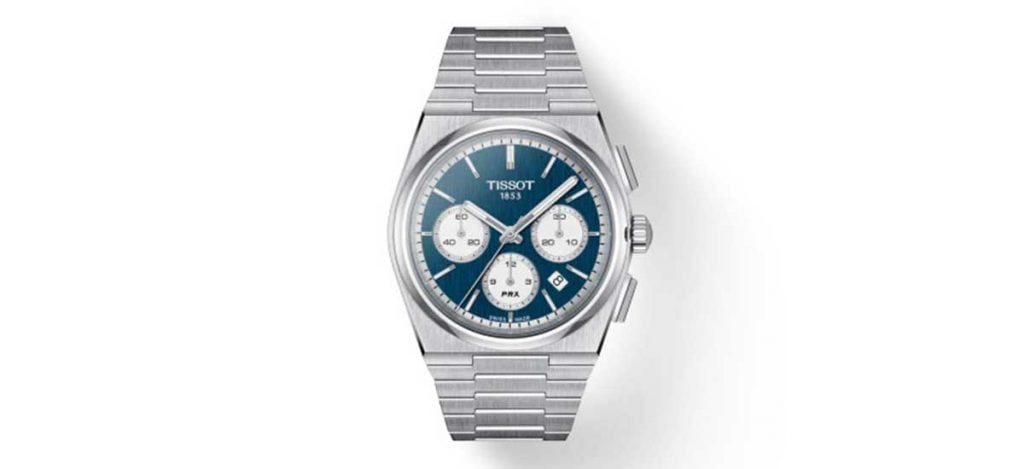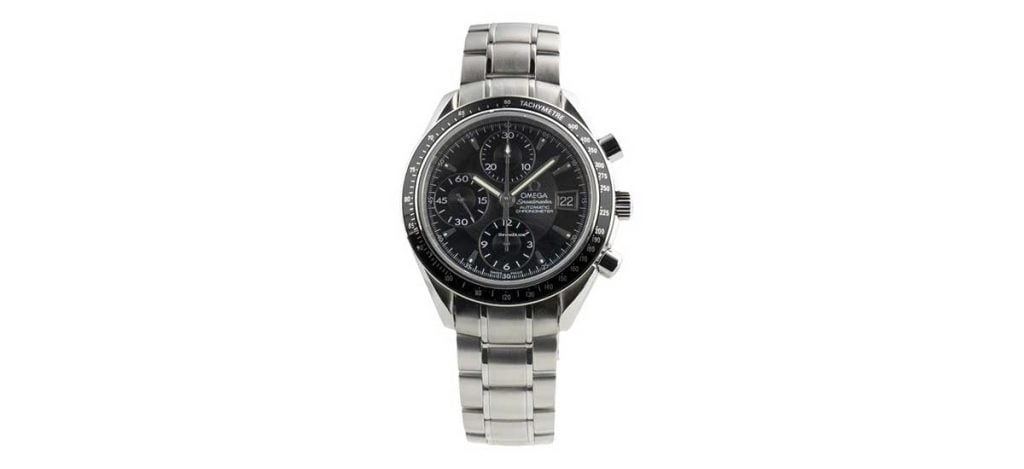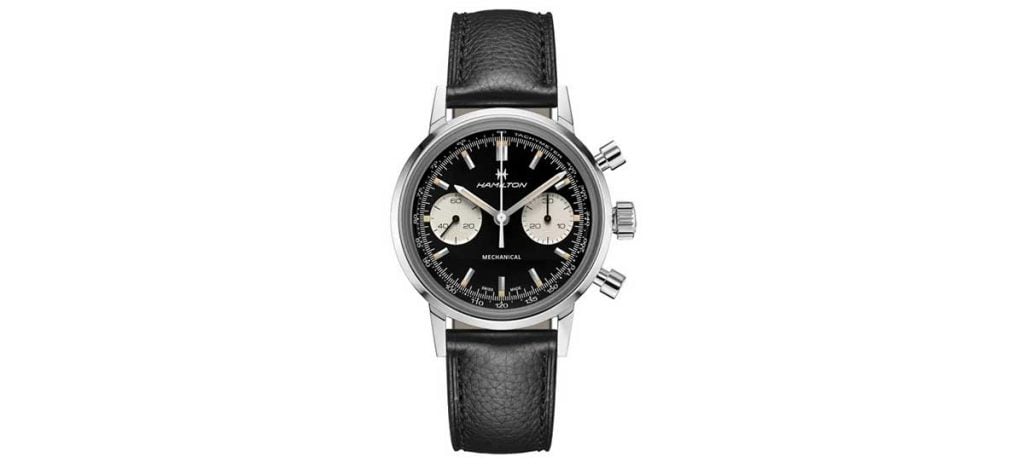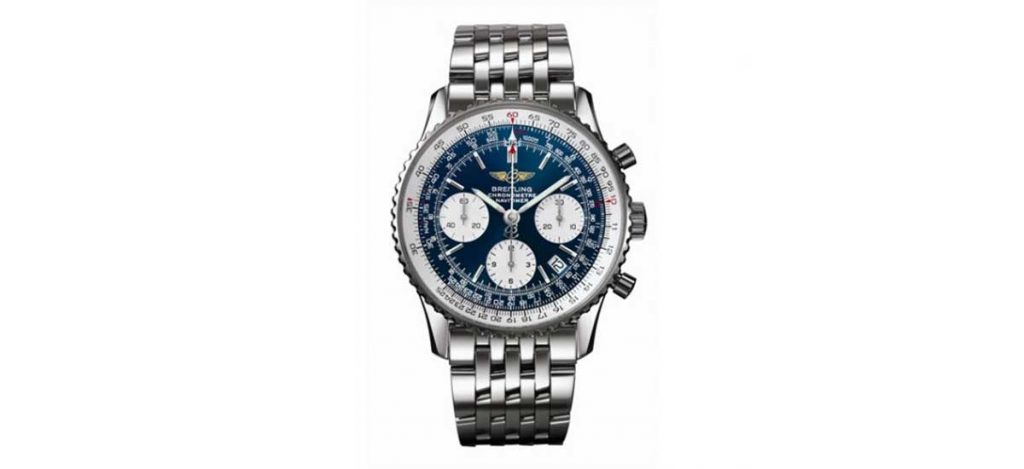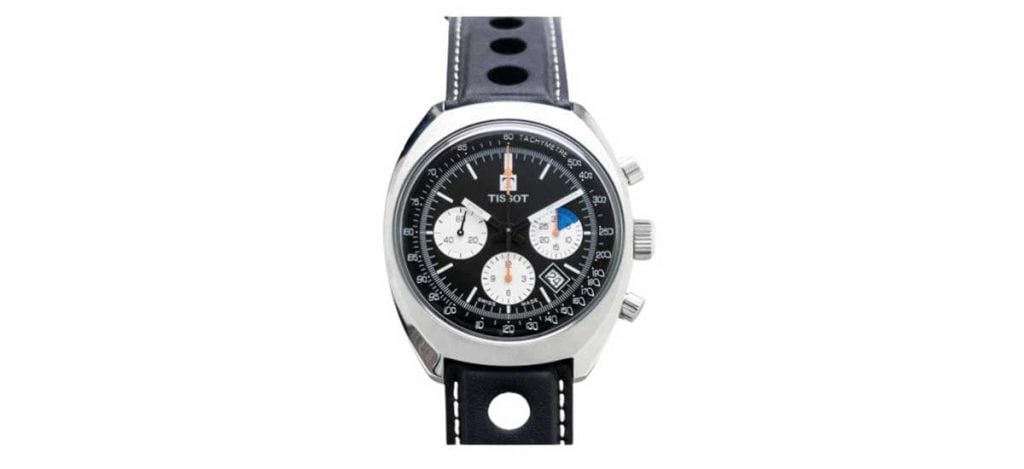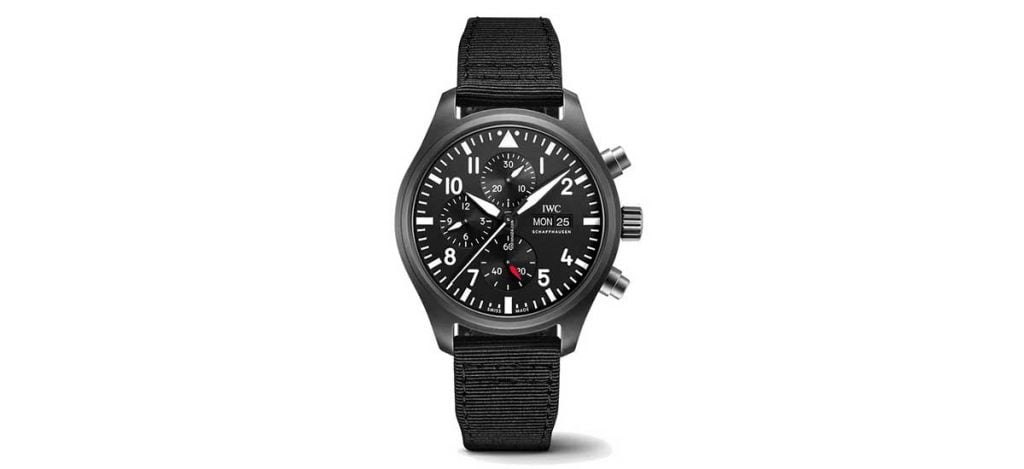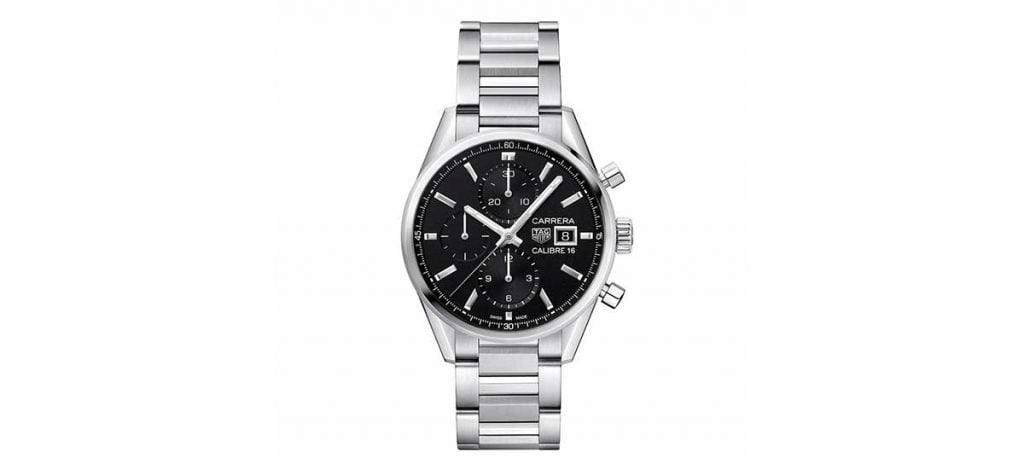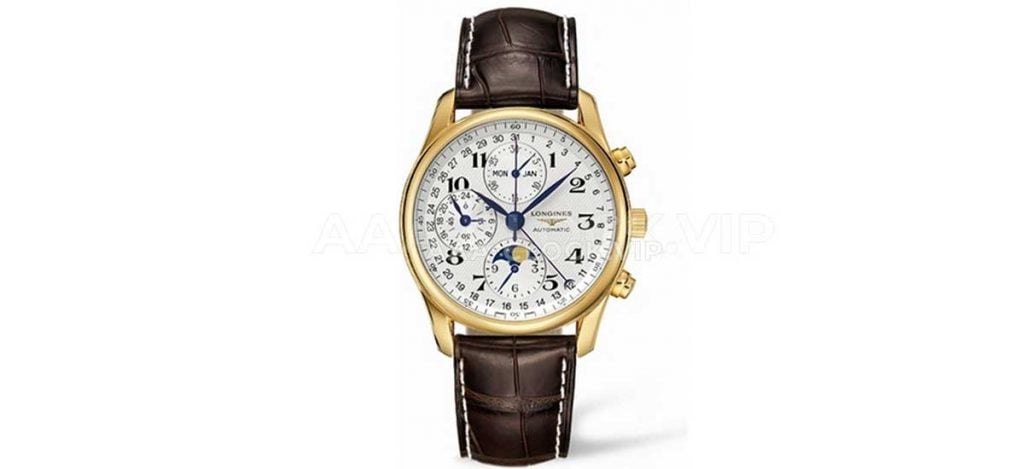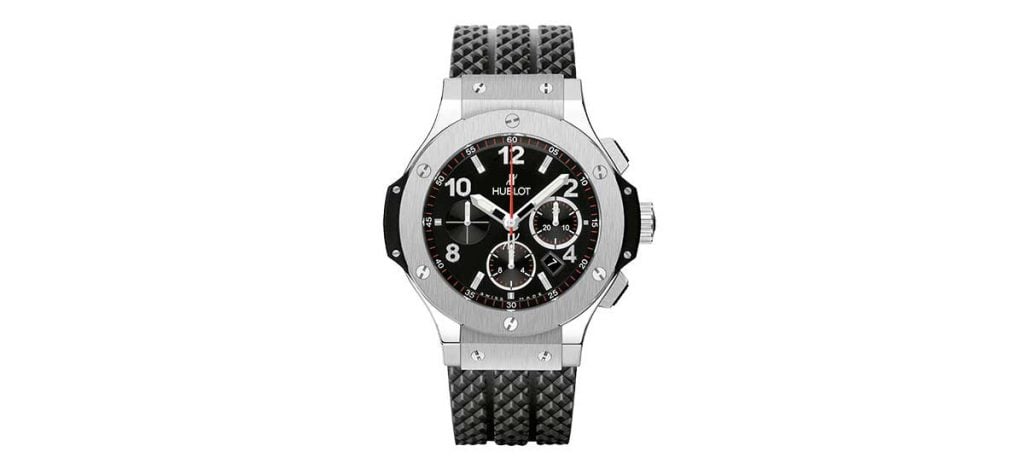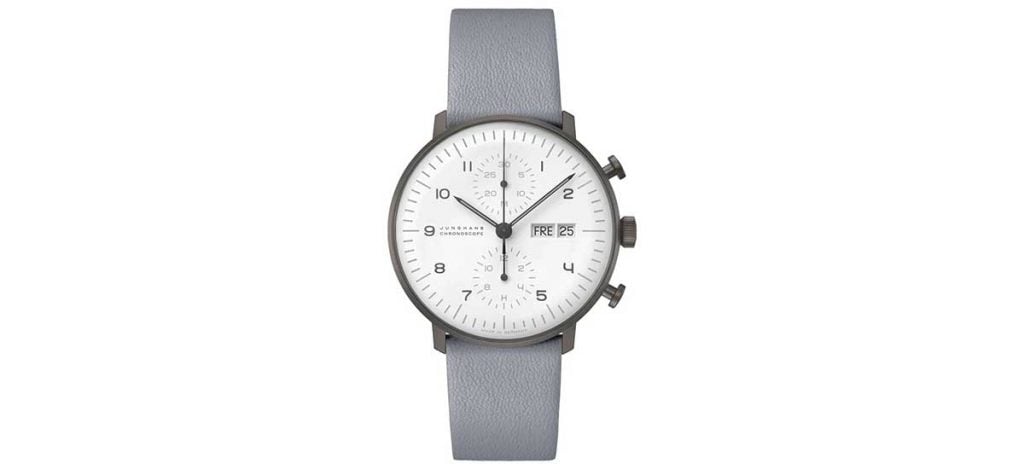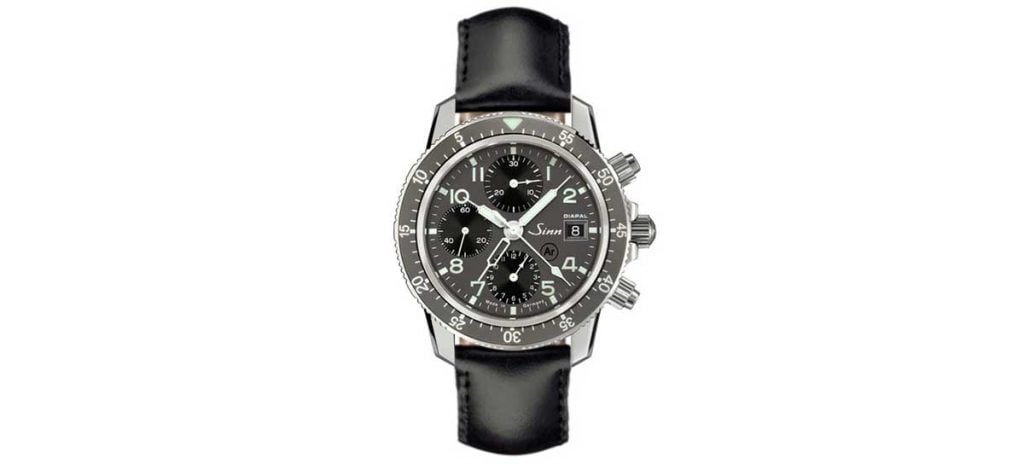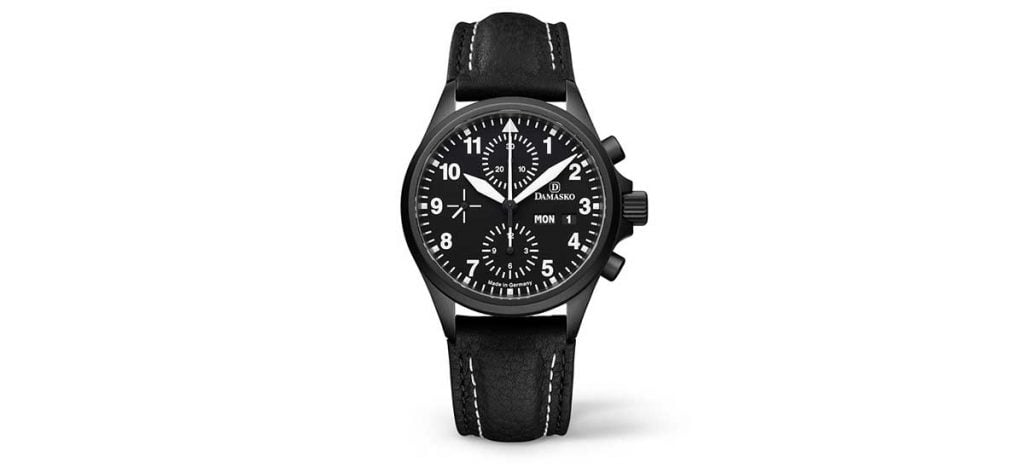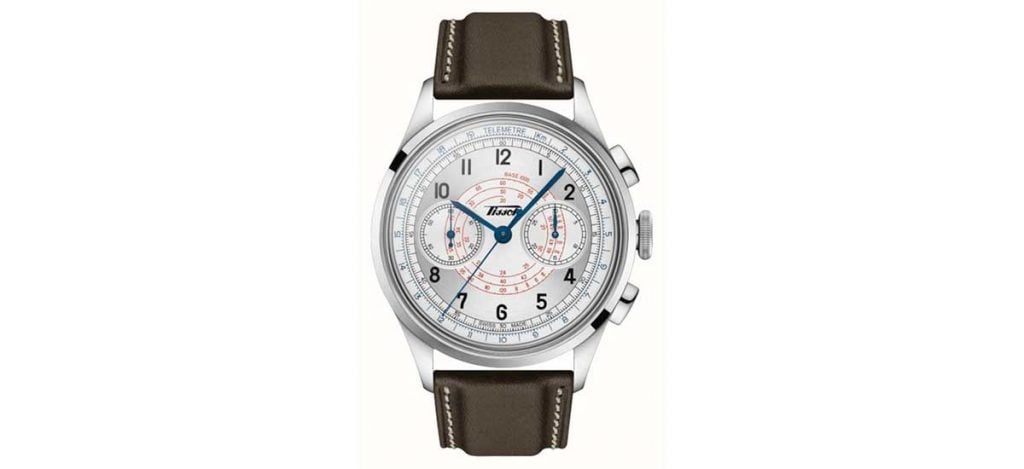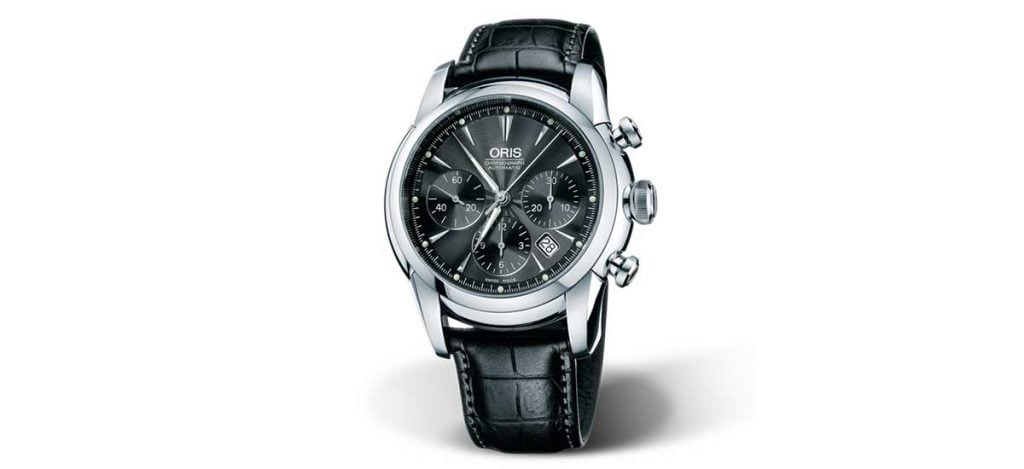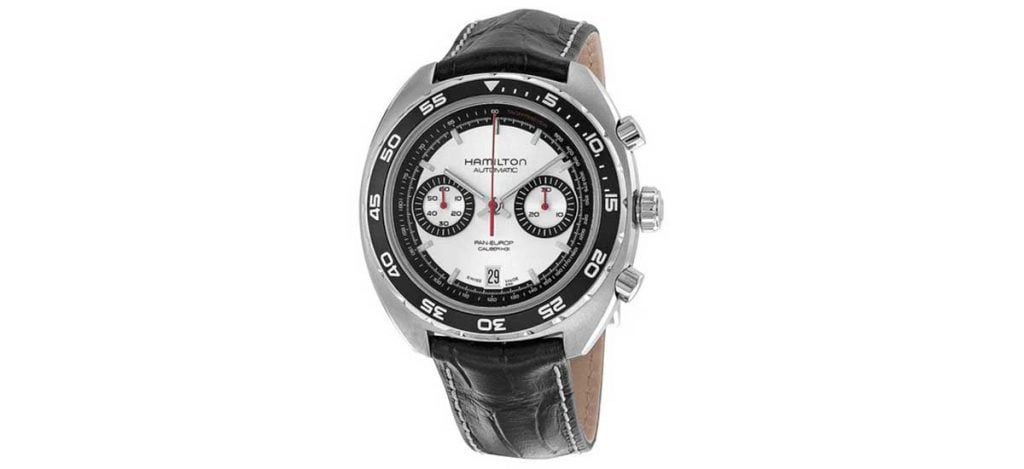
Cartier is an iconic name in watchmaking besides its embellished history of being a jeweler to the society’s elite, described by King Edward VII as “the jeweler of kings and the kings of jewelers”. Obsessed with design, Cartier has held its own as a watchmaker.
Its unique history in Art Deco-inspired high watchmaking has led them to create many icons of timeless elegance, molding itself into the modern-day “king of design” in the luxury watch industry. For perspective, we can call Rolex the king of sports watches and Patek Philippe, the king of complications.
From a Maison that is not born from watchmaking, it is second to Rolex. This was achieved by the brand’s focus on elegant design rather than complications, committing to the return of CPCP “Cartier Privé Cartier Paris” design language, or simply said, its original language of design.
With a focus on shape, elegance, refinement, sophistication, and attention to detail, it has revitalized the brand in recent years. About 60-70% of its sales are from a female clientele, and while having the “strongest identity in design” in the watchmaking industry, most or all of its designs are genderless. This offers a great degree of collectability available to the female audience, with an exquisite collection to unfold.
The History Of Cartier Watches
Cartier was founded in 1847 when Louis Francois Cartier took over his master’s workshop on 29 Rue Montorgueil amidst the ongoing French Revolution. 9 years later, Princess Mathilde, cousin of Emperor Napoleon III, purchased a Cartier creation and paved the way for the Maison to have access to the Parisian high society and the international elite.
In 1874, his son Alfred Cartier took over and was instrumental in introducing Cartier into the Royal Houses of Europe and beyond. It would be his sons Louis, Pierre, and Jacques who would aspire to transform the business from a local destination into an international luxury powerhouse with its boutiques in Paris, London, and New York. Each branch would operate independently of the other, making for an extraordinary archive of collectible and unique timepieces and jewelry pieces.
In 1898, grandson Louis, the eldest sibling, joined the Maison and would play a pivotal role in its evolution. He would establish the new boutique at Rue de la Paix in the jewelry district of Paris and would influence some of the company’s most celebrated designs like the mystery clock and exotic Art Deco designs like the “Tutti Frutti” jewels.
He would also create watches that would become the blueprint for its future collection. In 1905, he made history by releasing the first wristwatch, sports watch, and pilots watch when he created the Santos Dumont for his friend and pioneer in aviation Alberto Santos Dumont, who inspired the need for Louis to design the first pilots wristwatch that could be worn on his wrist during flight, and whom the timepiece is named after.
Another hugely successful design to this day would be his creation of the iconic Cartier Tank in 1917, inspired by an industrial design in the form of the top-down view of a Renault armored tank used in WWI– an elegant, timeless, loved, and cherished piece of design to this day.
Cartier watches have a history of appreciation from some of the most influential, famous, and style-conscious women. For perspective, Audrey Hepburn, a star of the silver screen, was seen wearing a Gold Cartier Tank in her role in Breakfast at Tiffany’s 1961. She was known to adore the watch and added it to her private collection.
Princess Diana was also known to wear a gold tank on several occasions. Kate Middleton has followed her effortless style, having been spotted wearing the Ballon Bleu and the Tank Française.
More First Ladies have chosen Cartier than any other watch brand– Jackie Kennedy famously received her first Cartier Tank when she became FLOTUS. Michelle Obama followed suit sporting her tank Francaise in her first official White House photo, and Dr. Jill Biden became the third first lady to wear a Cartier watch, having been seen wearing a gold Panthère de Cartier.
Last but not least, many celebrities– Madonna in the 80s, Gwyneth Paltrow in the 90s, and 2000s onwards, Sienna Miller, Anne Hathaway, Zendaya, Uma Thurman, Rihanna, and Dua Lipa have all been spotted wearing a Panthère de Cartier. The list can go on, and it is fair to claim that Cartier watches are an essential accessory for successful women.
What’s The Status Of Cartier Today?
Cartier remained under family control from its founding until 1964; today, it is a wholly-owned subsidiary of the Swiss Richemont Group but remains headquartered in Paris. Built in the 2000s, its modern and high-end watch manufacture in La Chaux-de-Fonds Switzerland is over 30,000 square meters and one of the largest in Switzerland together with the Rolex and Omega manufacture.
For three consecutive years, Cartier has usurped Omega as the second-largest luxury watch brand by revenue, with a turnover of CHF 2.75 billion in 2022. This achievement is thanks to the widespread recognition of its extraordinary archives in recent years, the influence of A-list celebrity hype (seen on the wrists of Kanye West & Tyler The Creator), and its refocus on its icons rather than complications.
Another noteworthy mention could be that with the widespread popularity of high-end watches in recent years and the unavailability of timepieces from its near equivalent in perceived luxury “Rolex”, Cartier’s approachability in the form of its iconic collections has influenced its recent success.
Given Cartier’s dual purpose as a jeweler and a watchmaker, its ability to serve its female clientele has set it apart from other well-known watchmakers. With an organic and poetic vision to design, its focus on creating beautiful objects with elegant and balanced proportions rather than highly complicated movements that fit into larger cases has made its designs neutral or unisex, thereby perpetually enriching the choice of great watches for its female clientele.
Best Cartier Watches For Women
If you’re interested in purchasing a Cartier ladies’ watch, there are tons of options to choose from. Here’s a list of the best Cartier watches for women you can pick up brand-new in 2025:
Cartier Tank Must Small (ref. WSTA0042)
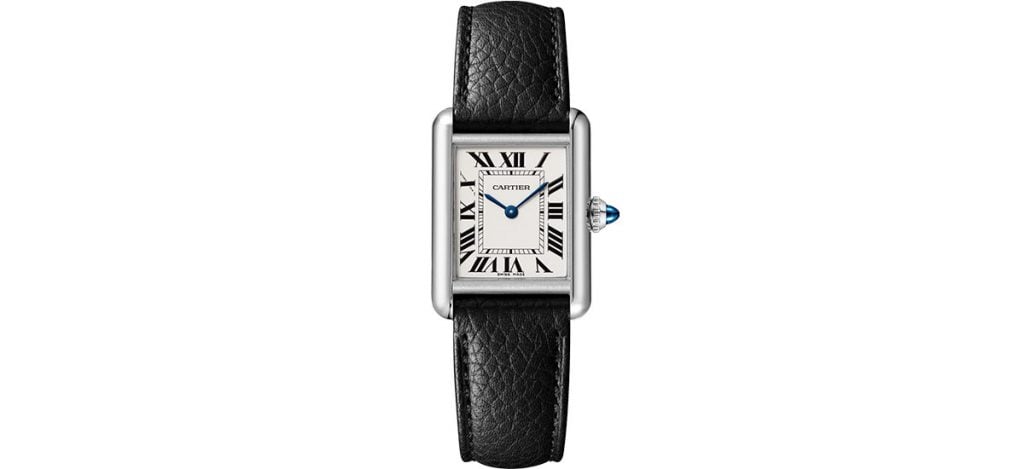
The WSTA0042 is the entry point within the Cartier Collection. The “Must” nameplate was first launched in 1977 during the quartz crisis. It was a subdivision of Cartier’s iconic Tank collection, equipped with a quartz movement and vermeil gold cases at a more affordable price; it was incremental for the brand to cater to the masses or growing upper middle class while offering the design hallmarks of the original iconic Tank Louis.
The Must collection recently returned to the fold, and with that, the Must Small. The new Musts would be offered exclusively in steel with a high autonomy quartz movement. Its classical design is most appealing, retaining the classical case shape and aesthetics of the original Tank Louis (only offered in precious metals and with mechanical movements), a timeless design over a century old.
The combination of steel and quartz allows Cartier to offer low barriers for entry due to its price of only $2,950. Its case dimensions of 29.5 x 22mm and thickness of only 6.6mm make for a daily wearable, versatile, and pure Tank experience on the wrist.
Cartier Panthère Medium (ref. WSPN0007)
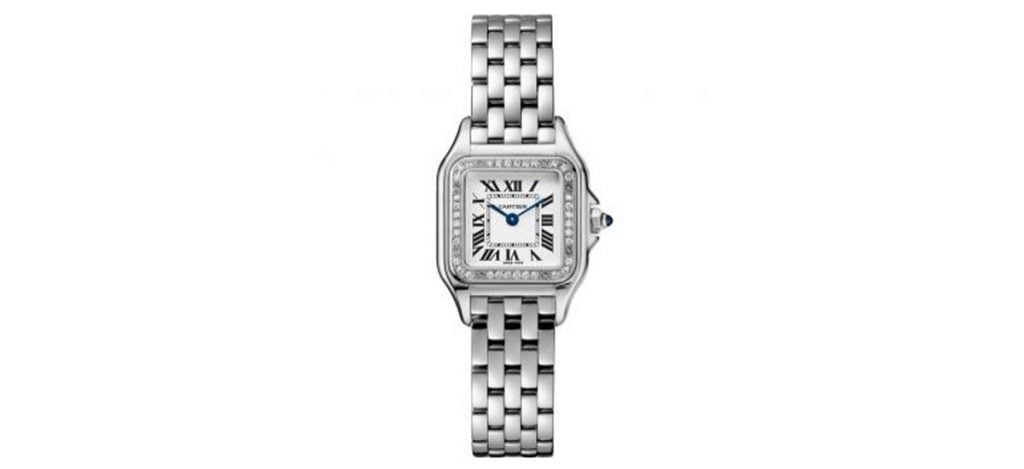
The Panther is Cartier’s iconic animal; its symbolism and elegance have greatly inspired Cartier’s creativity since 1914.
Louis Francois Cartier’s right-hand woman and design director Jeanne Toussaint, who signed off all luxury creations under the house between 1933 and 1970, would be famously nicknamed “La Panthère” – a tribute to her obsession with the feline that influenced her unique style and inspired her to create some of the Maison’s most prized pieces of jewelry.
Cartier presented the first “commercial” line of the Panthère in 1983, and after a brief production hiatus in 2004, it returned in 2017 to the permanent collection. The Medium WSPN0007 is a full stainless steel model with dimensions of 27mm x 37mm and a thickness of 6mm, making for a daily wearable versatile watch.
As a renaissance watch, it remains aesthetically unchanged from its predecessor, sporting a curvaceous case based on the Santos attached to a link bracelet. Its case marries effortless elegance with functionality, featuring curved edges, fluid crown guards, and the now iconic square bezel with rounded corners secured by eight screws (mirrored on its caseback).
This is combined with a classic silvered dial with printed elongated Roman numerals, a railroad minute track that frames its center, and blued sword hands offering contrast, matched to a synthetic sapphire cabochon on its crown, overall making for a signature Cartier look.
Its fluidity in design is carried through its completely polished bracelet, with small brick-like links attached to one another; the links are curved, offering less weight, more movement, and more comfort than other Cartier alternatives. As a steel model dressed in high finishing, combined with a quartz movement, priced at $5,200, this model is an approachable icon and a highly elegant ladies-focused offering.
Cartier Ballon Bleu Pink Dial (ref. WSBB0046)
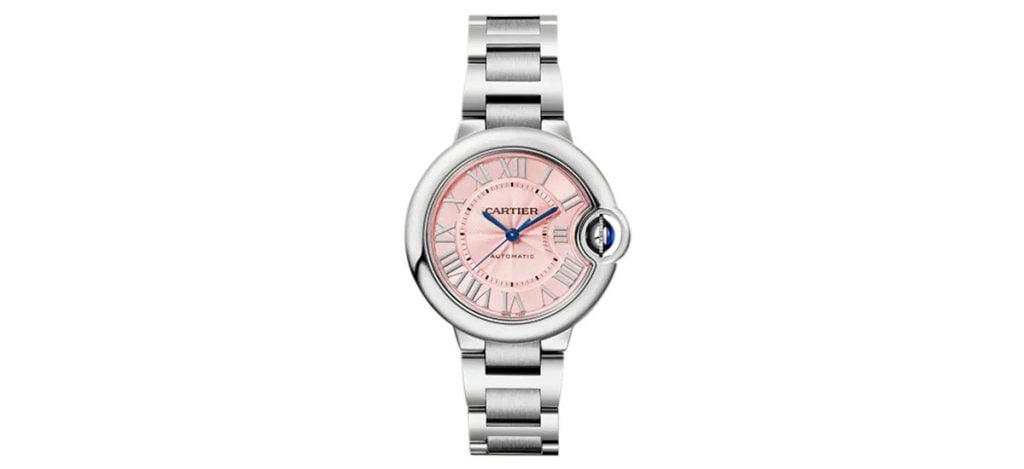
We know Cartier is most celebrated for its iconic case shapes; the Ballon Blue is one of its most contemporary yet unfamiliar designs due to its rounded form. While it doesn’t have the rich heritage of its iconic angular cousins, since its launch in 2007, it has become one of the most significant collections of Cartier.
This steel WSBB0046 comes in a case size of 33mm threading the lines between modern and chic in terms of wearability. It also allows for the inclusion of an automatic movement. Although appearing traditionally rounded in typical Cartier fashion, the design is unique and unmistakable.
This is accentuated by its pebble-like design, featuring a domed face and a domed caseback, accompanied by a narrow bracelet attached to short lugs. Its short lugs help the watch to wear smaller than its case size would suggest.
This model features a salmon pink dial, a color usually reserved for haute horology pieces. It is unique and bold, with silver Roman numerals printed along its periphery (its symmetry is broken for the inclusion of the winding mechanism integrated into its rounded case), a railroad minute track frames the center of its dial, and at its center is an embossed guilloche pattern.
Blued sword hands offer a contrast with a matching cabochon. Its aesthetics are in keeping with Cartier’s signature design language, with a twist of color. It is priced at $6,200.
Cartier Tank Française Small Gold Diamonds (ref. WJTA0039)
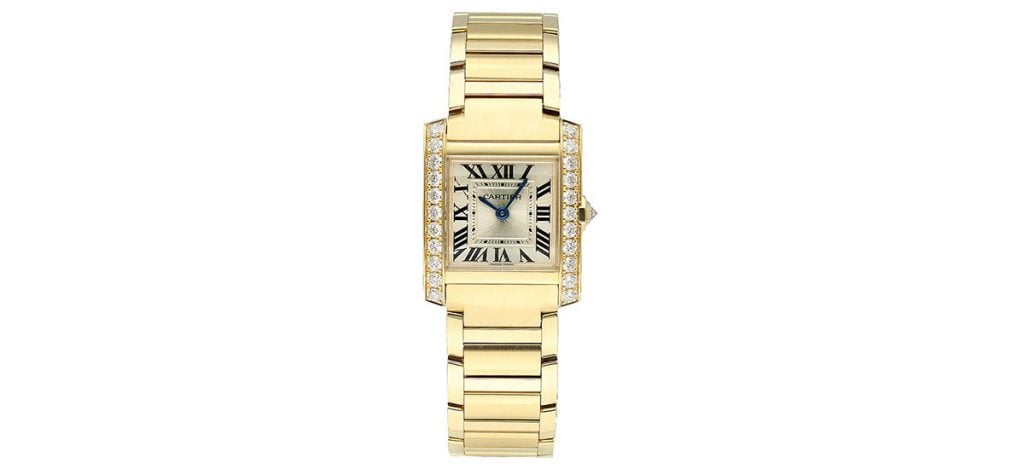
Cartier’s collection of iconic shapes is unprecedented; when the Tank Française was released in 1996, it was among the many evolutions of the original Tank Louis. Though late to the party, its integrated bracelet seamlessly extending from its bran-chards made for an incredibly versatile design and gained it a legion of followers.
This year, Cartier revamped the model retaining its jewel/bracelet watch DNA, modernizing the design, and evolving its lines to be a bolder, sportier, and more cohesive package.
The Small WJTA0039 is one of the exquisite models within the Française lineup, featuring a full 18k yellow gold case (25.7mm x 21.2mm) and bracelet construction, combined with 22 brilliant cut diamonds embedded along its bran-chards and a matching diamond embedded in its crown that is partially integrated into its caseband (overall totaling 0.78 carats in diamonds).
Its new golden sunray dial blends harmoniously with its predominantly brushed precious yellow metal case. Retaining the traditional Cartier aesthetic we know of, it has bold Roman numerals in gunmetal gray, a railroad minute track framing its center, and blued sword hands.
It also has a quartz movement, which will be pretty low maintenance, a luxury perhaps for a watch that is not defined by its movement, but by its design. This angular, chiseled, industrial piece of art can be had for $29,000.
Cartier Ballon Bleu Rose Gold Diamond Dial (ref. WGBB0052)
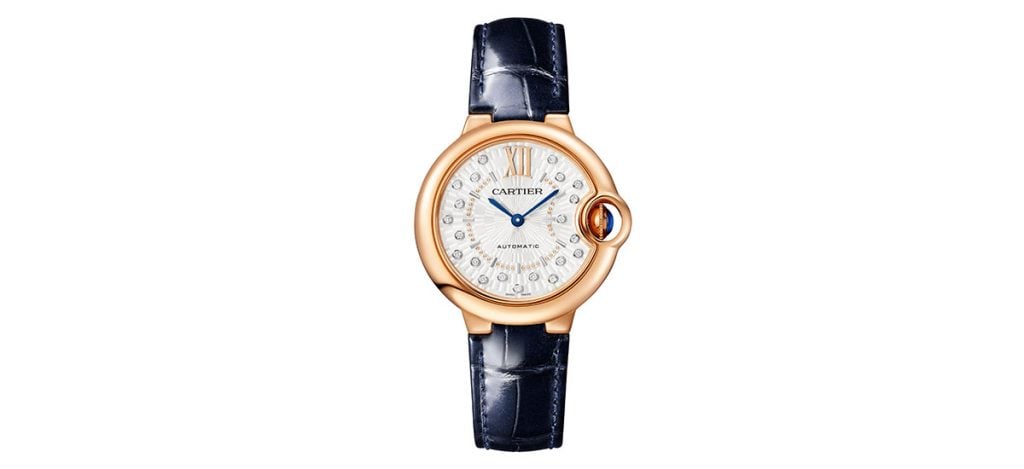
The WGBB0052 is a dressier take on the traditional Ballon Bleu, with a precious metal case, a diamond-encrusted dial, and an alligator leather strap. It is a tribute to the versatility of its pebble-like case shape and follows unwritten rules of being a unique dress watch to add to your collection.
This model comes equipped with a 33mm solid 18k rose gold case. It maintains the symmetrical lines of all traditional Ballon Blue’s with its domed pebble shape on its face and caseback and an integrated crown in its round case breaking the dial’s symmetry.
The main highlight of this model is its matt silvered stamped sunray dial set with 21 brilliant cut diamonds, totaling 0.10 carats. For contrast and in keeping with classic Cartier design language, it features blued hands with a matching sapphire cabochon set into its crown.
To complement its iconic “blue theme”, its alligator leather strap is blue (equipped with an 18k rose gold buckle to match the case), transforming its wearability and highlighting the presence of its unique case shape better than its bracelet contemporaries. It comes with an automatic movement and is priced at $15,600.
Cartier Panthère Small Diamonds (ref. W4PN0007)

Exclusively made for women, an iconic heritage design (40 years old, based on a century-old design) with a cult following from a high watchmaking Maison and jeweler of the elites, offered with a factory diamond setting, a steel case and bracelet, a quartz movement, and therefore affordably priced at $8,400, is an unheard combination of specifications that remains exclusive to Cartier in its W4PN0007 offering.
Like the Medium WSPN0007 mentioned earlier, the small W4PN007 is an identical model in smaller proportions combined with a bezel set with brilliant-cut diamonds. Its 23 x 30mm stainless steel case with 6mm thickness offers a more elegant, feminine, and jewelry-focused wearing experience.
For powerful women who want an iconic and fashionable watch worn by the world’s most chic and famous women, with a gem set handled by the world’s leading jewelry maker, combined with the daily robustness of steel and its low-maintenance quartz movement, it is a perfect crossroad of female horology and the world of jewelry.
Cartier Tank Must Solarbeat™ (ref. WSTA0061)
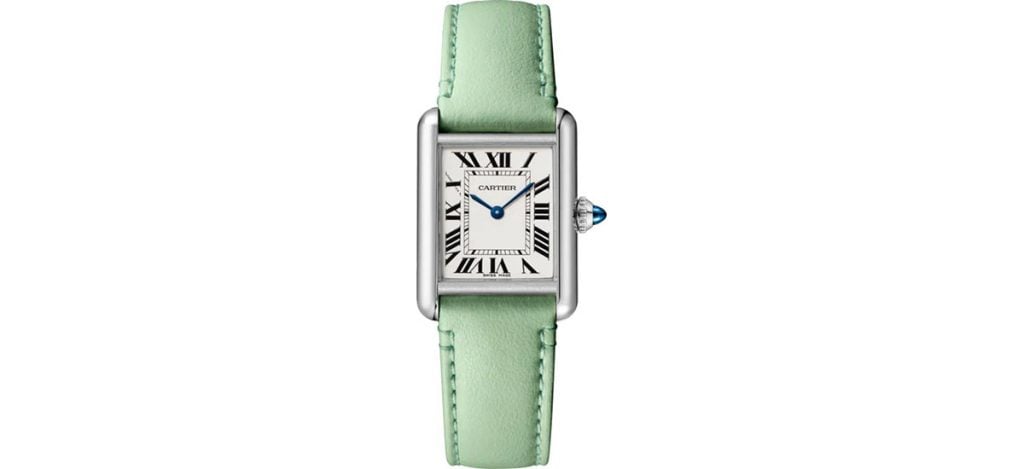
The WSTA0061 saw its release in 2021 as a true Tank distilled down to its essence, accompanied by what would be deemed a modern revolution of the “Tank Must de Cartier” of old, due to its movement that draws power from the sun, instead of a quartz movement that made the “Must” nameplate so popular.
Solar is a brand new technology for Cartier, and a huge selling point is the carefree nature of this movement, with the ability to go through 16-year battery change intervals, twice that of the high autonomy quartz movements Cartier offers.
Compared to the modern Tank Solo line, the vertical bran-chards of the Tank Must are rounded to resemble the Tank Louis, therefore retaining the case shape and lines of the original Tank. This Small model is aesthetically identical to the current production “WSTA0042” mentioned in our list.
With bold Roman black numerals printed along the periphery of its rectangular dial (solar cells hidden beneath), accompanied by a railroad minute track that frames the center of its silver opaline dial, sword-shaped heat-blued hands offer contrast, with a matching synthetic sapphire cabochon that sits atop a highly ornate crown. With its eco-friendly movement in mind, it comes standard on a vegan leather strap.
Cartier Panthère Mini Rose Gold Diamonds (ref. WJPN0020)

The Panthère is a power watch for women, just like the “Rolex Day Date” is for men. In 1983, it was born in the midst of the quartz crisis and helped keep the Maison’s exclusive customers happy during a time when Cartier was appealing to a mainstream audience following the launch of the Must de Cartier collection.
The Panthère was a bold move from Cartier. While many luxury brands were hurting selling luxury pieces, its unyielding focus on luxury, design, and the Maison’s “je ne sais quoi” has made it an icon. It is no surprise that Cartier dedicates a diverse collection to the Panthère, embracing grand embellishments. Within lies the WJPN0020, with lots of diamonds.
This model features a solid 18k rose gold case and bracelet; its dimensions measure 25mm x 20mm and 6mm thick, making it one of the smallest offerings in the Panthère lineup. It is combined with the signature flowing brick-style bracelet that allows for the mini-sized piece to articulate properly on the wrist. Women will also appreciate its compactness and, therefore, lightness for a watch with a full 18k gold construction.
This reference highlights its many brilliant cut diamonds embedded into its case, bezel, lugs, and bracelet end links; the sapphire cabochon that sits atop its octagonal crown is replaced with a brilliant diamond to match. Its silvered dial is consistent with other Panthère models, with a railroad minute track and blued hands for contrast. Priced at $30,400, accompanied by a quartz movement, it is effortless high luxury packaged in an iconic, timeless design.
Cartier Ronde Must Small (ref. WSRN0030)
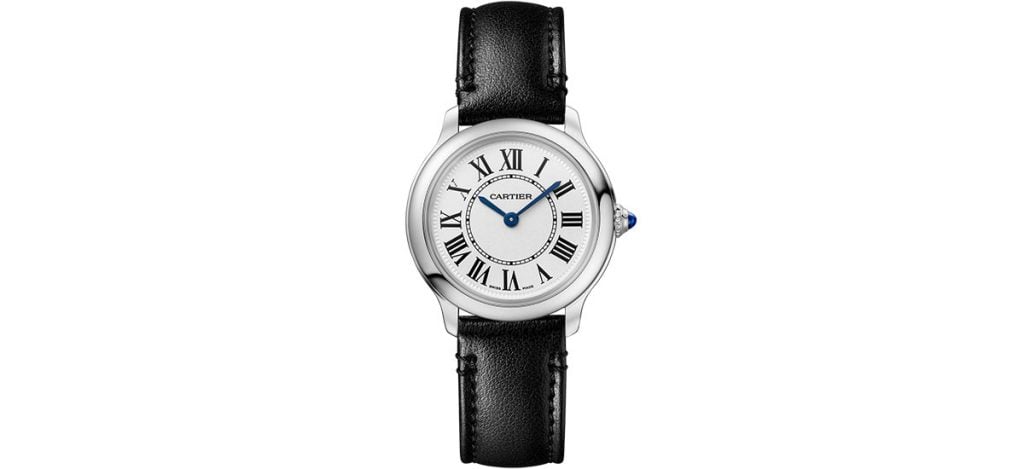
The Ronde can be described as Cartier’s most simple design within its vast offering of angular and irregular-shaped watches. In the horology industry today, most of us gravitate towards familiar round-shaped timepieces due to their versatility.
The Ronde is Cartier’s play in the circular watch segment. Louis Cartier’s own creation, offered in the late 1930s, today’s Ronde collection provides a timeless charm and exudes signature Cartier details that make it stand out amongst other circular dress watches.
This Small WSRN0030 is offered under the “Must” subdivision. It comes in steel, accompanied by a high autonomy quartz movement (with 8 years of power). Its 29mm round case with a thickness of 8.5mm is completely polished, with smooth lines, short inward bending lugs, and a highly ornate beaded crown set with a sapphire cabochon.
It is effortlessly sophisticated, complimented by a signature Cartier dial in sandblasted silver, with bold black Roman numerals, a railroad minute track at its center, and blue sword-shaped hands. Paired with a black vegan leather strap, it’s a timeless essential and versatile daily wearer that many will love. Priced at a suitable $2,700.
Cartier Coussin Rose Gold (ref. WJCS0004)
The existence of the Coussin within Cartier’s collection reminds us that besides the Maison being an iconic haute horology watchmaker, it is also a haute jeweler. A tribute to its prowess in both extremes, it has a unique case shape and only comes embellished fully with diamonds.
The WJCS0004 is a medium-model quartz-equipped offering. Its solid 18k rose gold case is 30.4mm x 31.1mm in diameter, with a thickness of 7.1mm. Its case resembles the aesthetics of a cushion, hence its “Coussin” nameplate and its design is complemented with a pattern of spiral-set diamonds.
With a matching diamond featuring on its ornate crown, it has 177 brilliant cut diamonds totaling 4.09 carats. Its exquisite jewelry-focused look is matched with an elegant sunray silver Roman numeral dial and a soft beige calfskin strap attached to hidden lugs behind its case. In a sea of iconic and unique designs, the Coussin is a focused tribute to Cartier’s high society flair. Priced at $32,500.
Cartier Tank Louis Small (ref. WGTA0010)
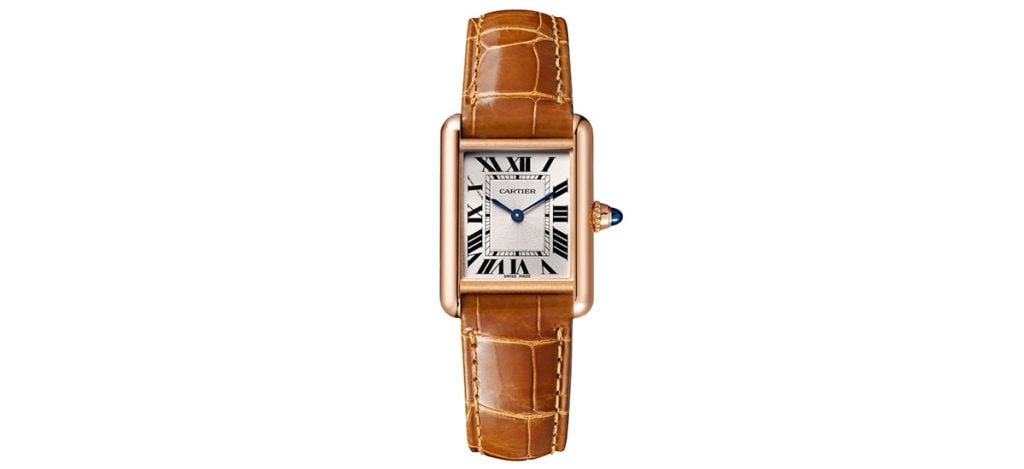
Designed and named after Louis Cartier himself, now over a century old design, the legacy of the Tank Louis preys upon the haute-ness of any retro icon in existence. Perpetuating its original blueprint since its inception (1917), this “original rectangular watch” is one of the most elegant, influential, and timeless designs ever created.
The Small WGTA0010 is offered with case dimensions of 29.5mm x 22mm, a thickness of 6.35mm, and a quartz movement. Its case is made fully of 18K yellow gold and is attached to a tan alligator leather strap with a matching 18k yellow gold buckle.
It has a silver-grained dial with bold black Roman numerals, a railroad minute track at its center, and contrasting blued sword hands that match the sapphire cabochon that sits atop its ornate crown. Its design language and aesthetics exude signature Cartier DNA and are the continued format of the Original Tank Louis. Priced at $10,200, it is essential for any haute horology lover.
Cartier Panthère Small Gold (ref. WGPN0039)
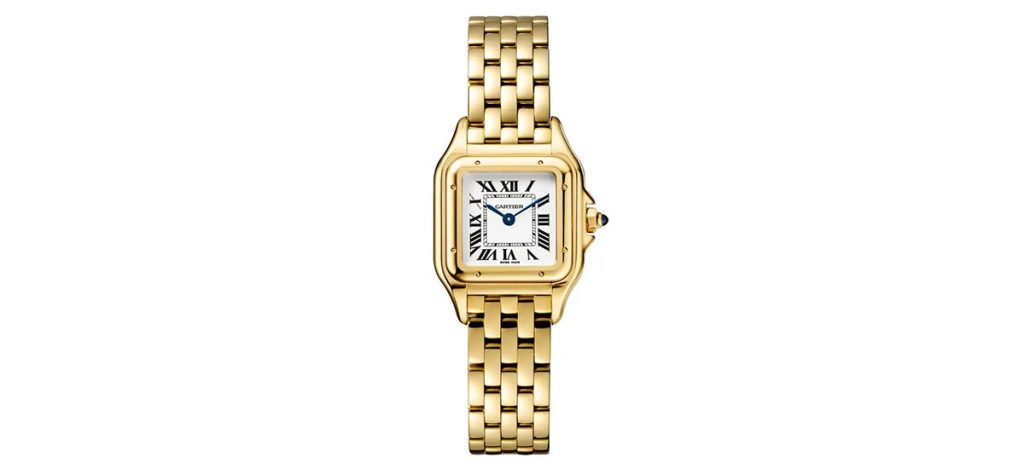
While the Panthère is known to be a soft, delicate, elegant, and feminine evolution of the Santos, an iconic and timeless design on its own, the WGPN0039 takes its elegance and evolution further with a double-loop bracelet based on the articulate brick style link bracelet that defines the Panthère collection. Its full gold construction and exotic-styled bracelet further lend its functionality as a timeless, highly recognizable timepiece towards becoming a statement piece of jewelry on the wrist.
Sized as a Small Panthère with a 23mm x 30mm 18k yellow gold case and a thickness of 6mm, it is well balanced in size and presence on the wrist with its novel double loop bracelet. Like all Panthère models, design is the main focus of this piece while benefiting from a low-maintenance quartz movement.
This model is a testament to the versatility in design of the Santos case that evolved into the Panthère and the versatility of the brick-style bracelet that was created for the Panthère. It is a package of historic high watchmaking and high-end bracelet-making that Cartier is known for. The best of both worlds can be had for a hefty $36,700.
Cartier Ballon Bleu Rose Gold (ref. WJBB0063)
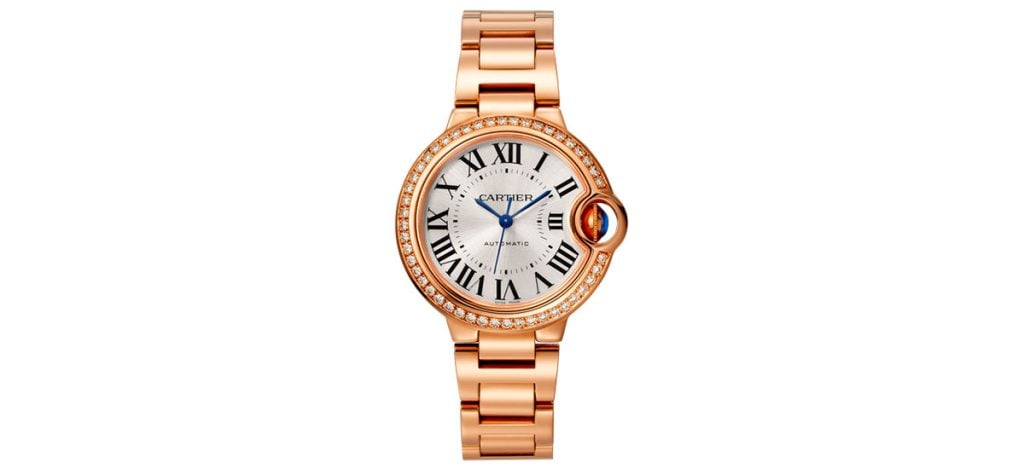
Since its launch in 1983, the round watch from Cartier, the Ballon Bleu, has become a mainstay and a huge success in the collection. It is not uncommon to see it on the wrists of movie stars, political figures, and even royalty; Kate Middleton is famously known for choosing to wear hers frequently. The WJBB0063 takes the quintessential ladies’ Ballon Bleu with its signature elements and offers an uber-luxury combination of a precious metal construction and gem setting.
This model features a 33mm solid 18k rose gold case with compact lugs attached to a matching 18k rose gold interchangeable bracelet. Its sizing hits the sweet spot between being refined and contemporary on the wrist. In keeping with the wider preference of watch collectors of today, it features an automatic movement. The main attraction of this model is its full gem-set bezel consisting of 47 brilliant cut diamonds totaling 0.68 carats.
Its dial is silvered with a sunburst effect, bold black Roman numerals are printed along its periphery, with a railroad minute track at its center. Its hands are blued, offering contrast, with a matching sapphire cabochon set into its fluted crown.
Like all Ballon Bleu models, its crown is integrated into the case, breaking the symmetry of the dial. Its combination of precious metals, gem setting, mechanical movement, and usage of the classic Ballon Bleu template makes for a clean, simple, and timeless design that can be passed down to generations. It comes with a price tag of $32,900.
Cartier Pasha Diamonds (ref. WJPA0019)
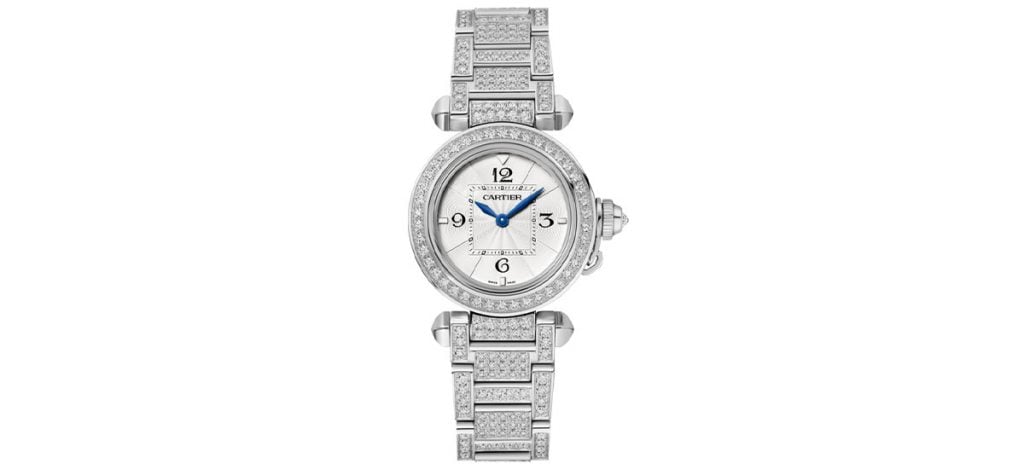
The origin story of the Pasha begins in the early 1930s when the Pasha of Marrakesh (hence its “Pasha” nameplate) commissioned a waterproof watch from Louis Cartier so that he could go swimming with it. While the original design of this watch created in 1933 remains shrouded in mystery, the Pasha design we know today was penned by the legendary watch designer Gérald Genta in 1985.
It is a rounded case design that doesn’t play by Cartier’s rule book, with a square railroad track on its dial, forgoing characteristic Roman numerals for Arabic ones. It also featured a diving bezel and a canteen-styled crown to hark back to its origin as a sports watch.
The WJPA0019’s party trick combines its iconic 80s design with an exquisite gem setting. It has a 30mm 18k white gold case, attached with a centralized lug design to an 18k white gold bracelet. The watch is completely gem-set with 425 brilliant-cut diamonds totaling 7.3 carats.
It is complemented with a traditional Pasha-style opaline flinqué dial that has a square railroad track and blued steel sword hands for contrast. Typical of Cartier’s ladies’ models that are focused on aesthetics and extreme luxury, it comes with a convenient quartz movement. It is priced largely at $132,000, not for the faint-hearted.
Cartier Coussin Medium White Gold (ref. WJCS0012)
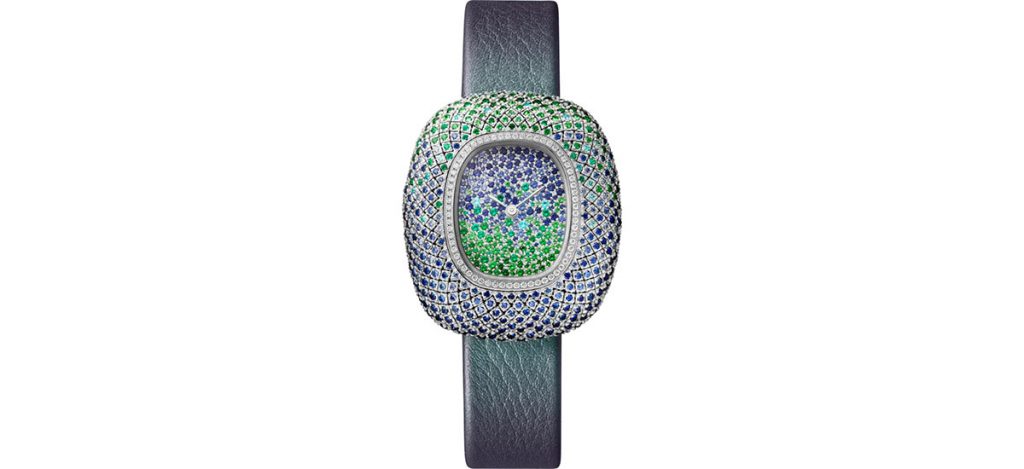
Cartier’s ability to communicate its language of design in the form of poetic case shapes is unprecedented. The Coussin is a design inspired by the shape of a cushion and is elevated through its exclusive usage of gem settings, harmoniously complementing one another. This model is also made to deform like a cushion, another element of storytelling in design achieved through the sensation of touch.
The WJCS0012 is a medium-sized offering with case dimensions of 39.3mm x 32mm and a thickness of 13mm. It is only offered with a quartz movement, which is the more convenient choice for a watch that is suited best for special occasions. Its flexible 18k white gold case is completely gem set, including its dial, in a swirl pattern.
This comprises 85 brilliant-cut diamonds totaling 0.38 carat, 587 sapphires, 276 stavorites, 45 emeralds, and 18 tourmalines. Its blue-green persona is matched with a blue calfskin strap featuring a white gold buckle. Priced at $79,000, it is a unique and unmistakable offering, combining haute watchmaking with haute jewelry making that defines Cartier’s legacy.
Conclusion
Cartier stands proudly as one of the most recognizable watch brands in the industry today. Its established/rich history as a jeweler, and its pioneering commitment to beautiful designs (case shapes) that follow form before function, have led the Maison to create timeless icons that have captivated the minds of the most astute collectors.
In a time where precise/reliable timekeeping has easily become available to the masses, and haute horology merely exists through how it makes us feel; its visual storytelling and consistency of design language means that you know a Cartier when you see one. It is a love letter to the cultured art of fine watchmaking.









